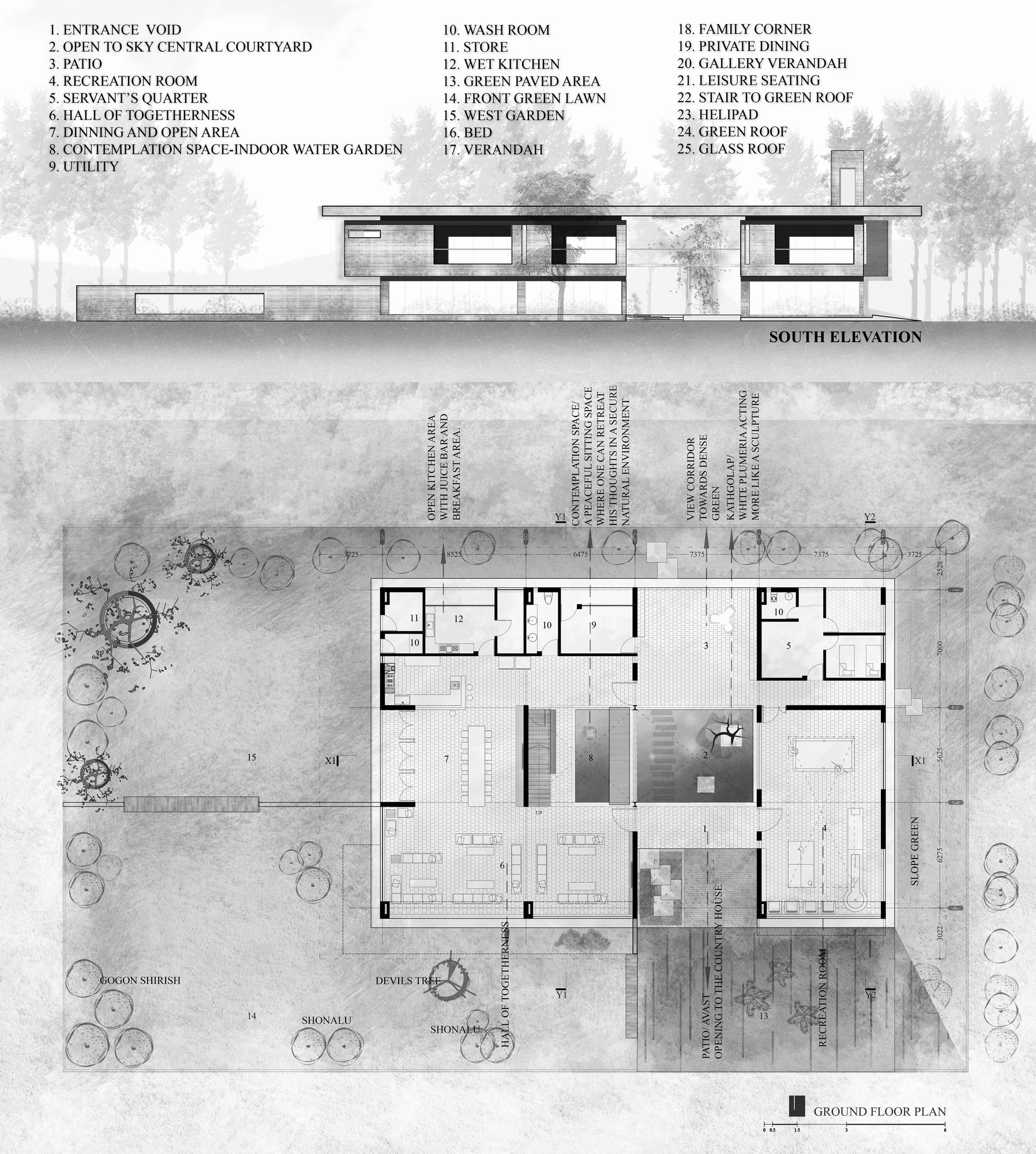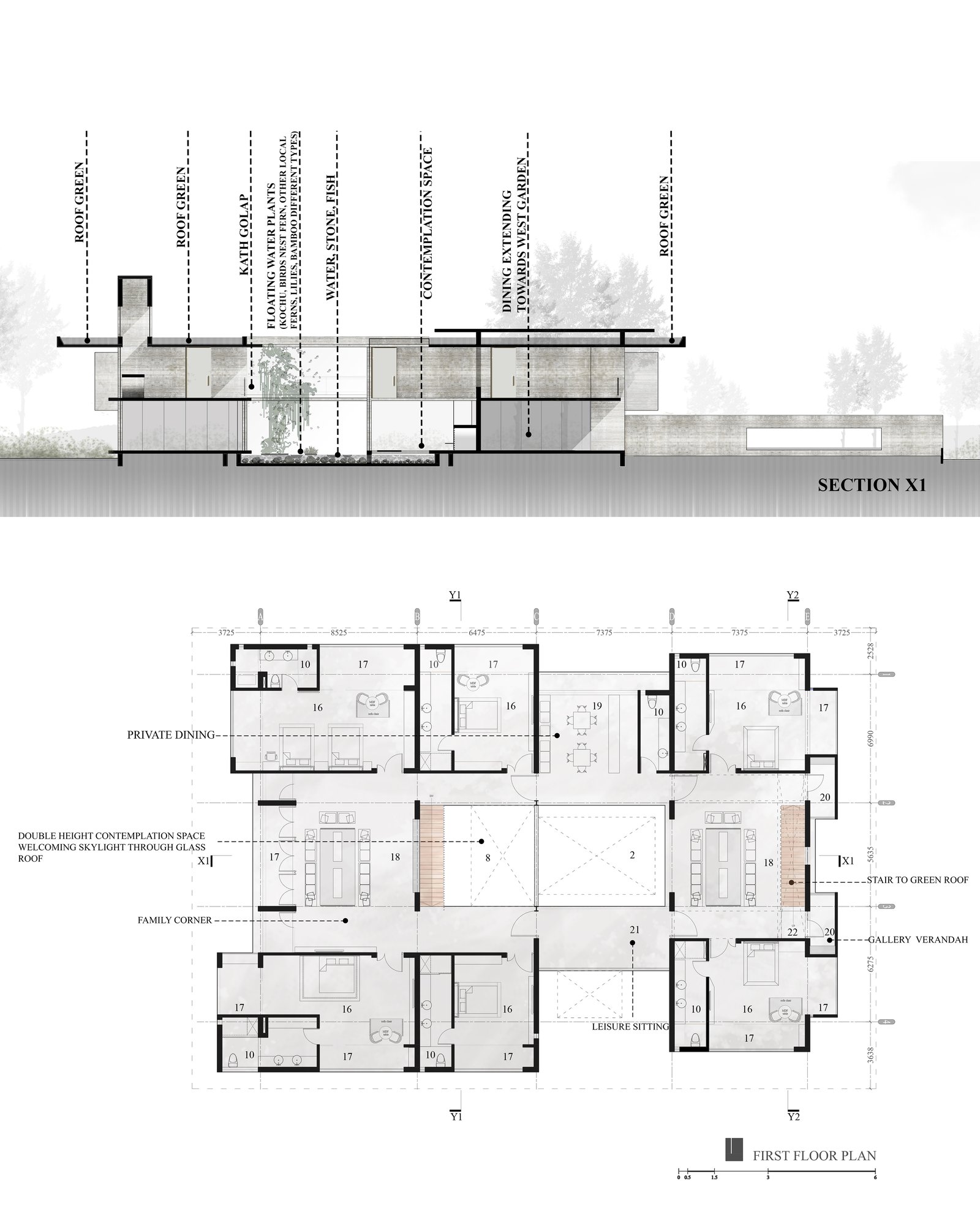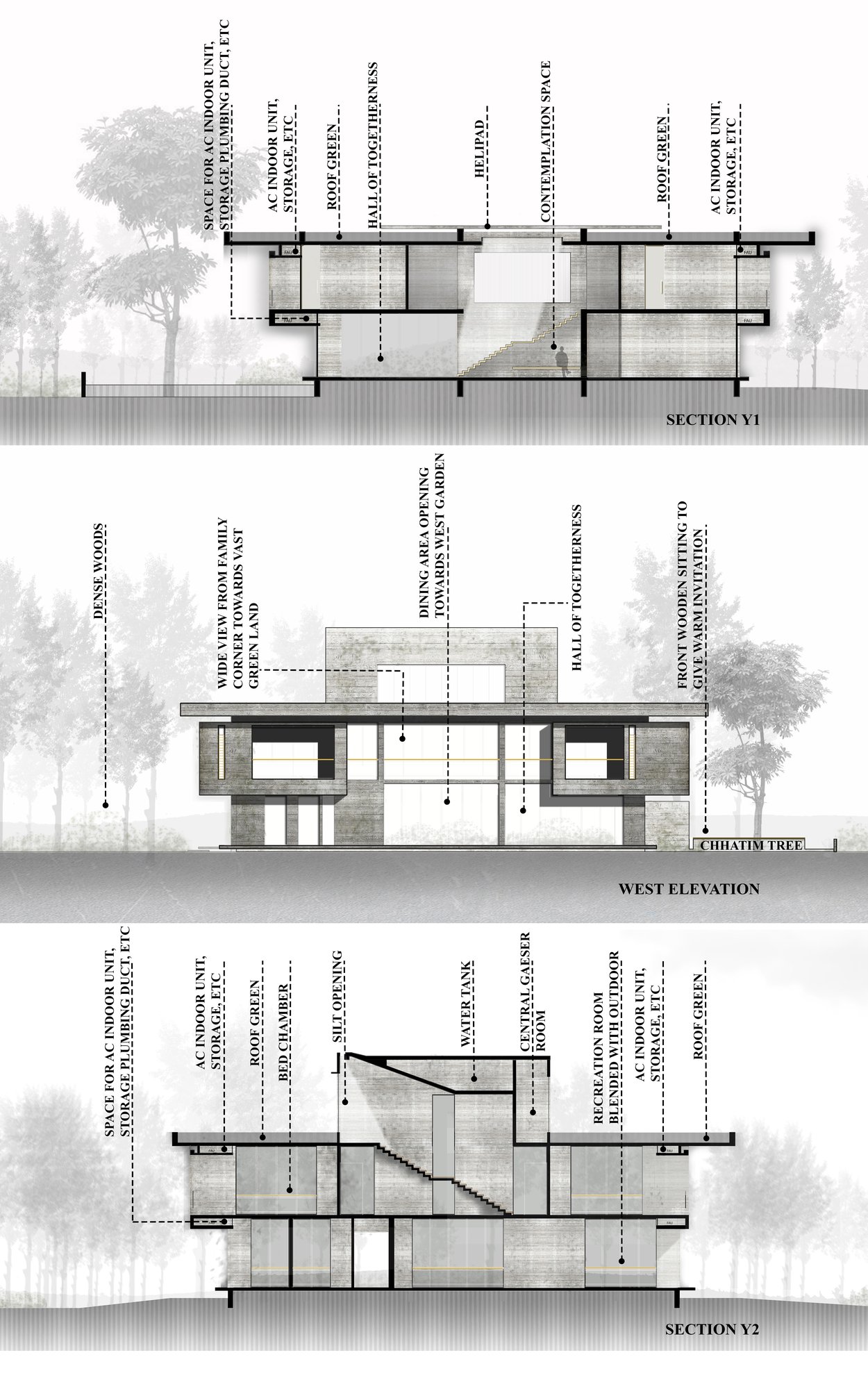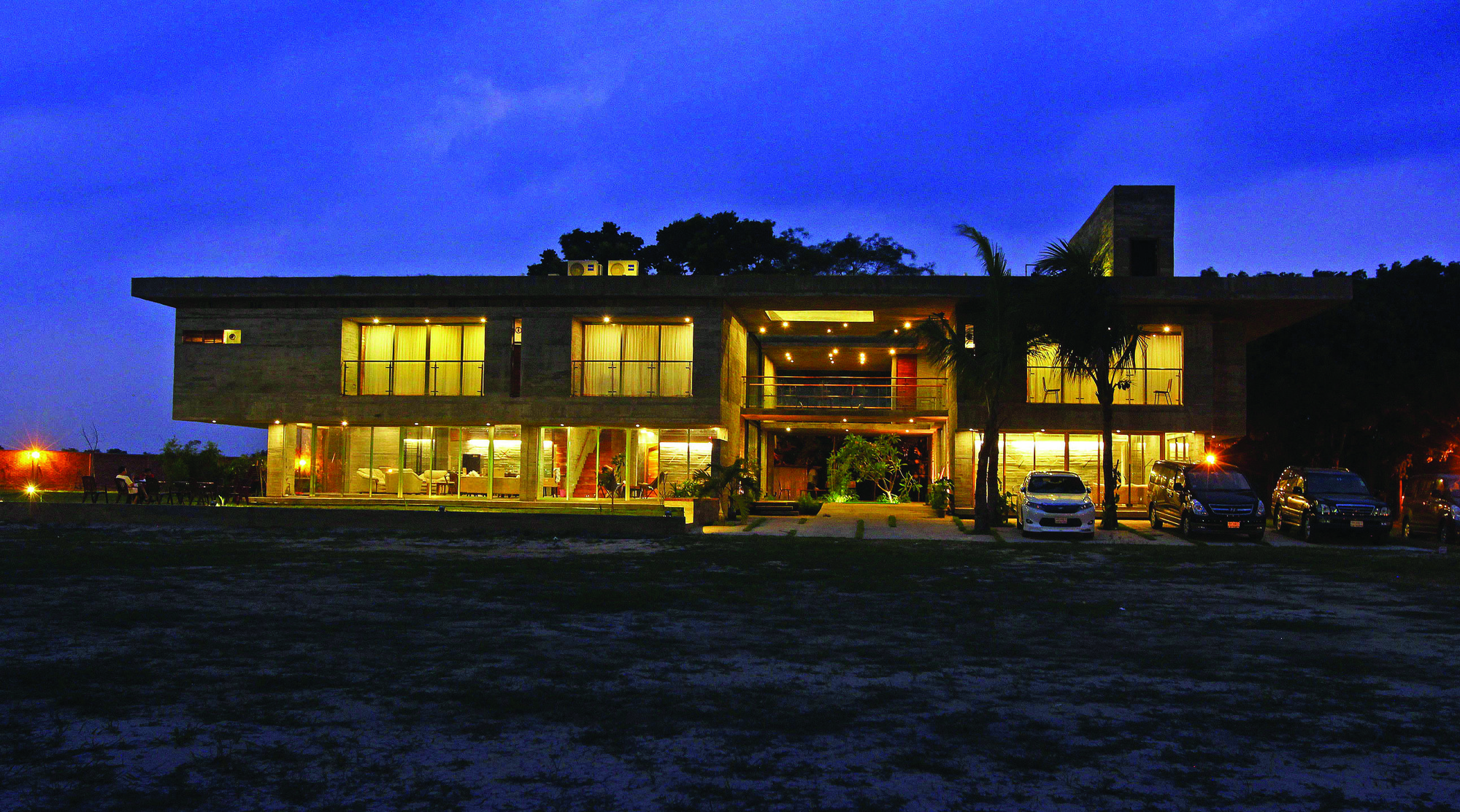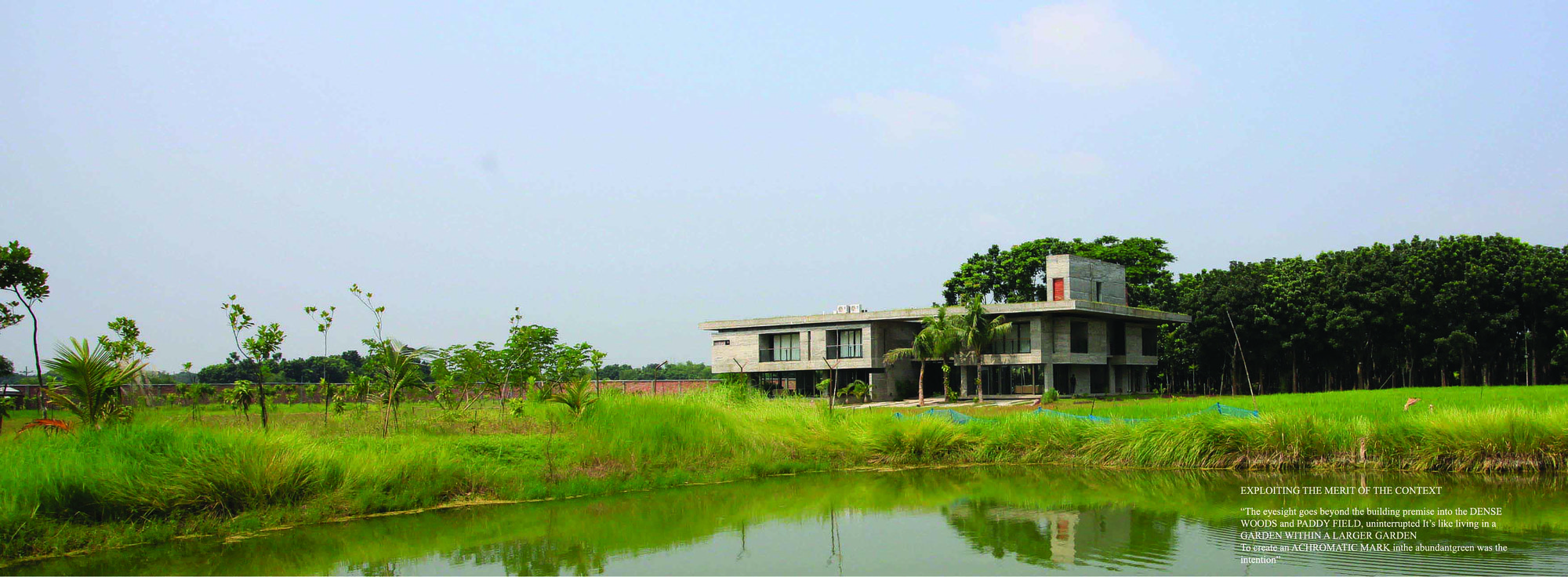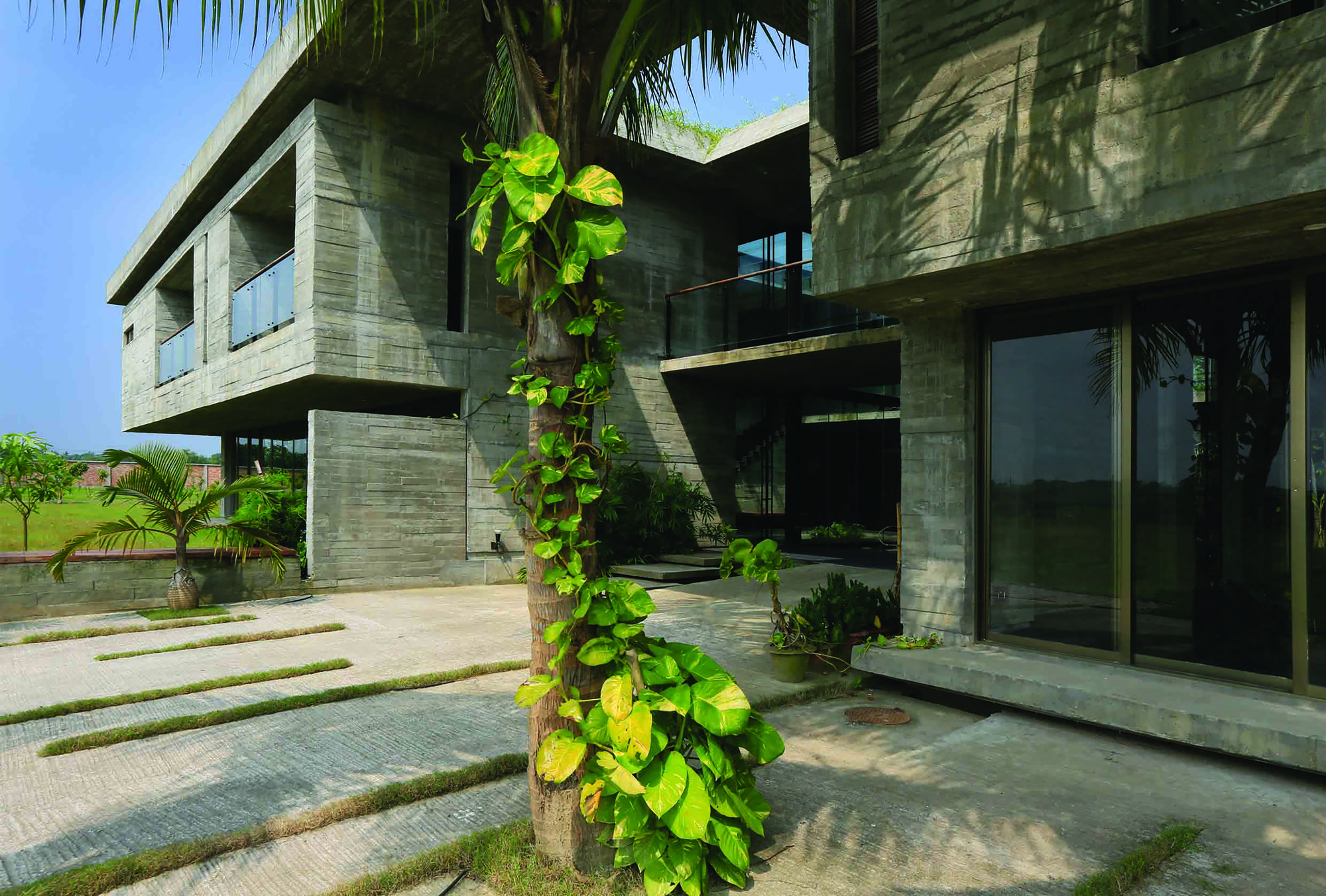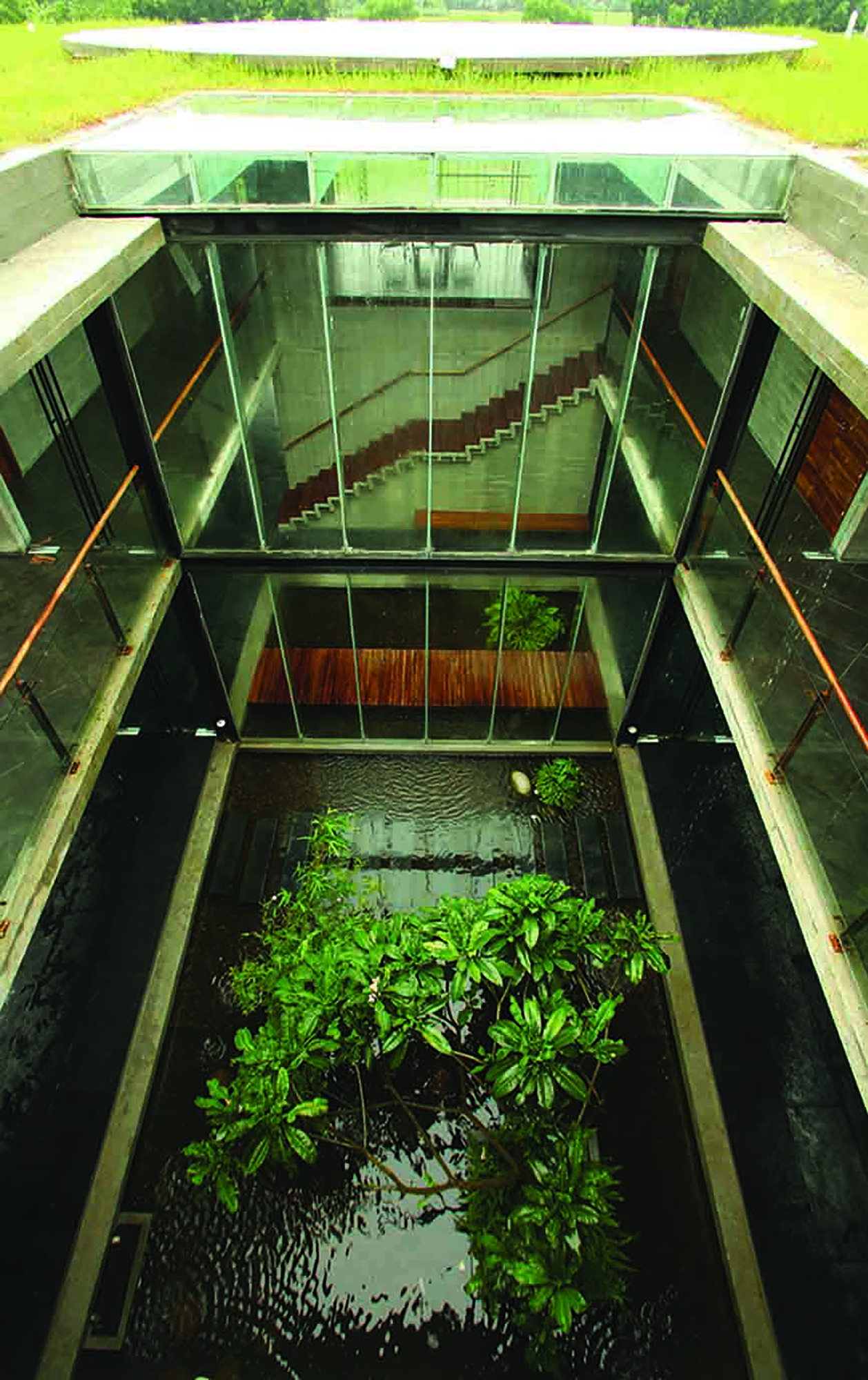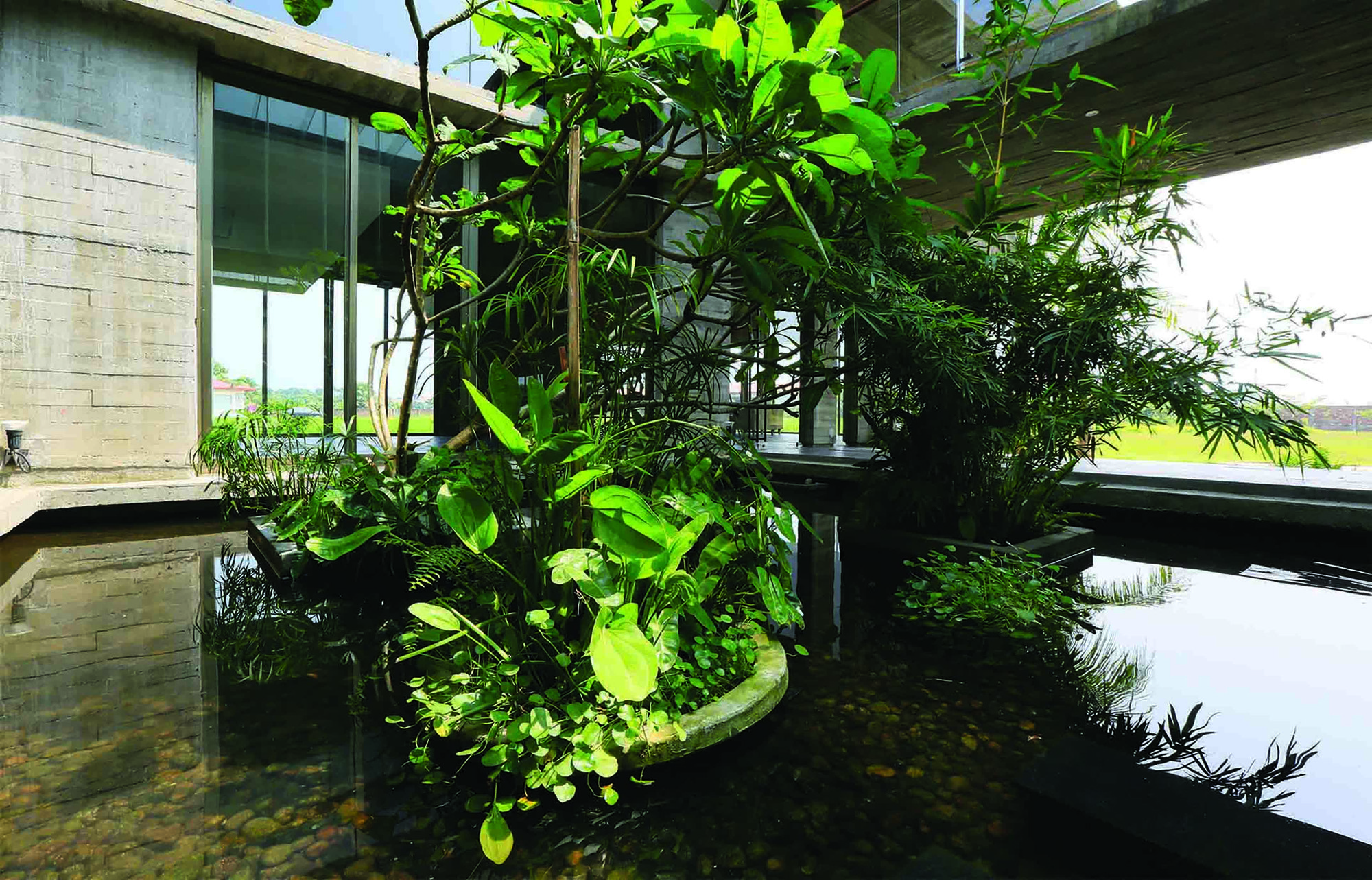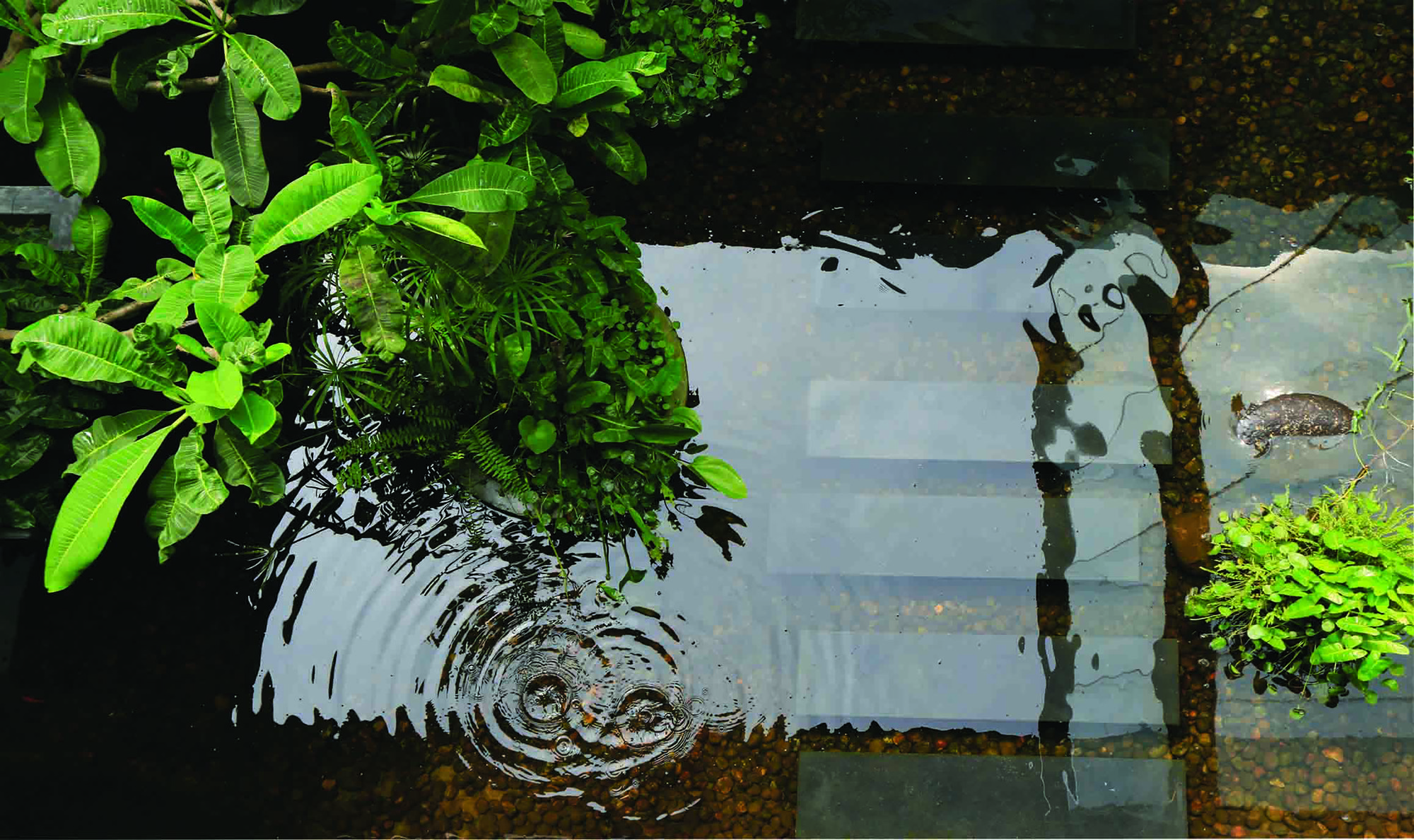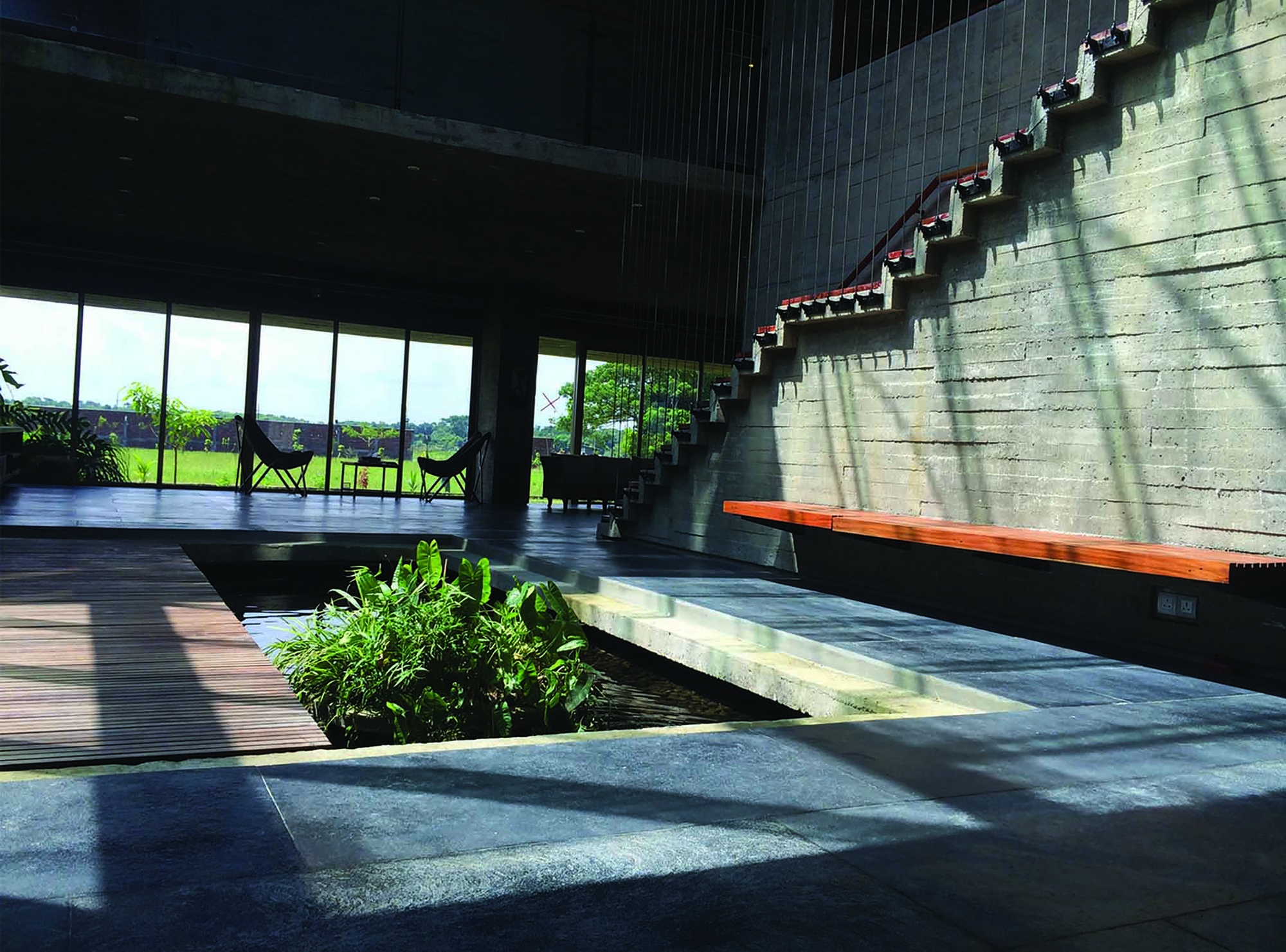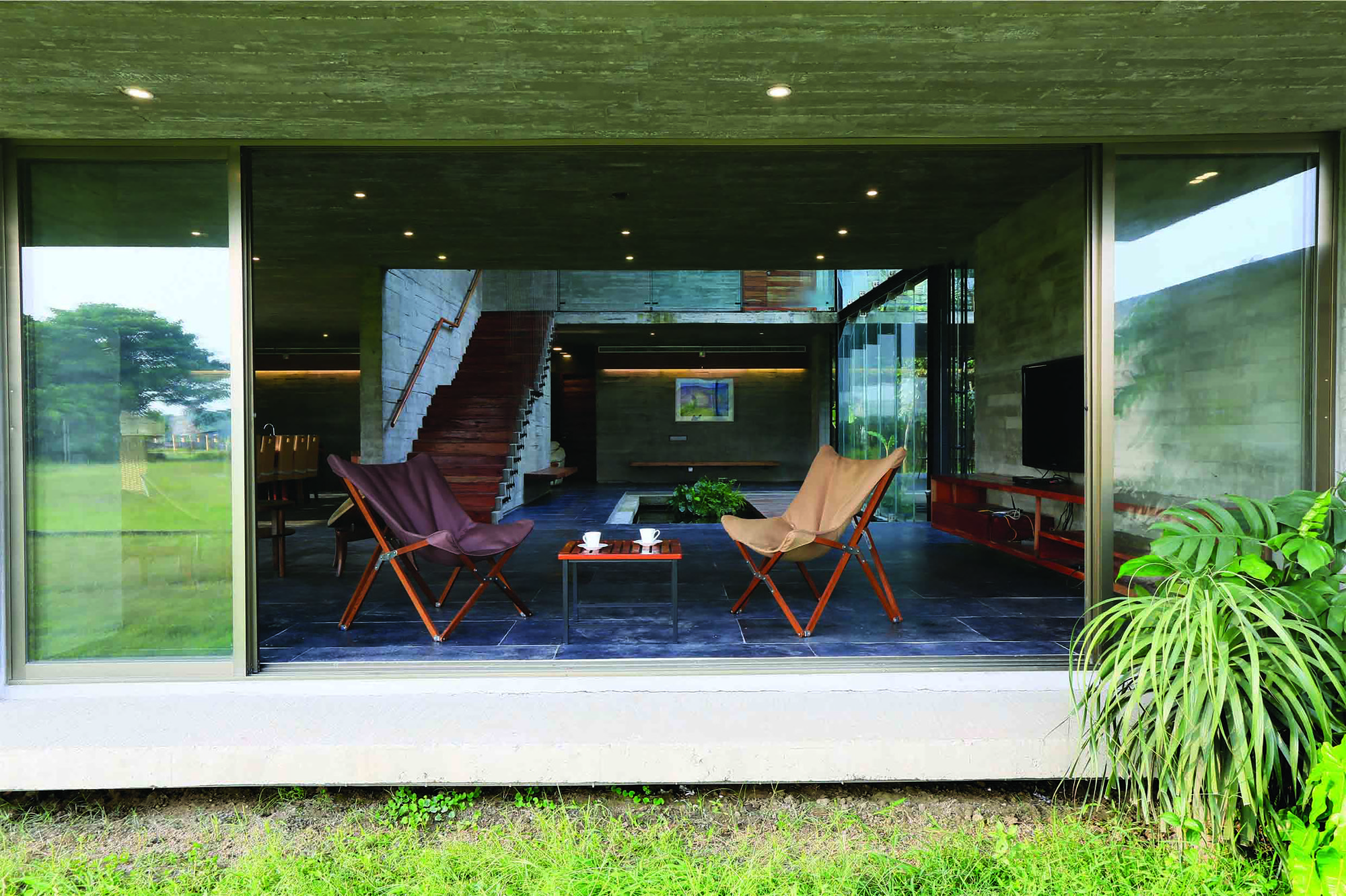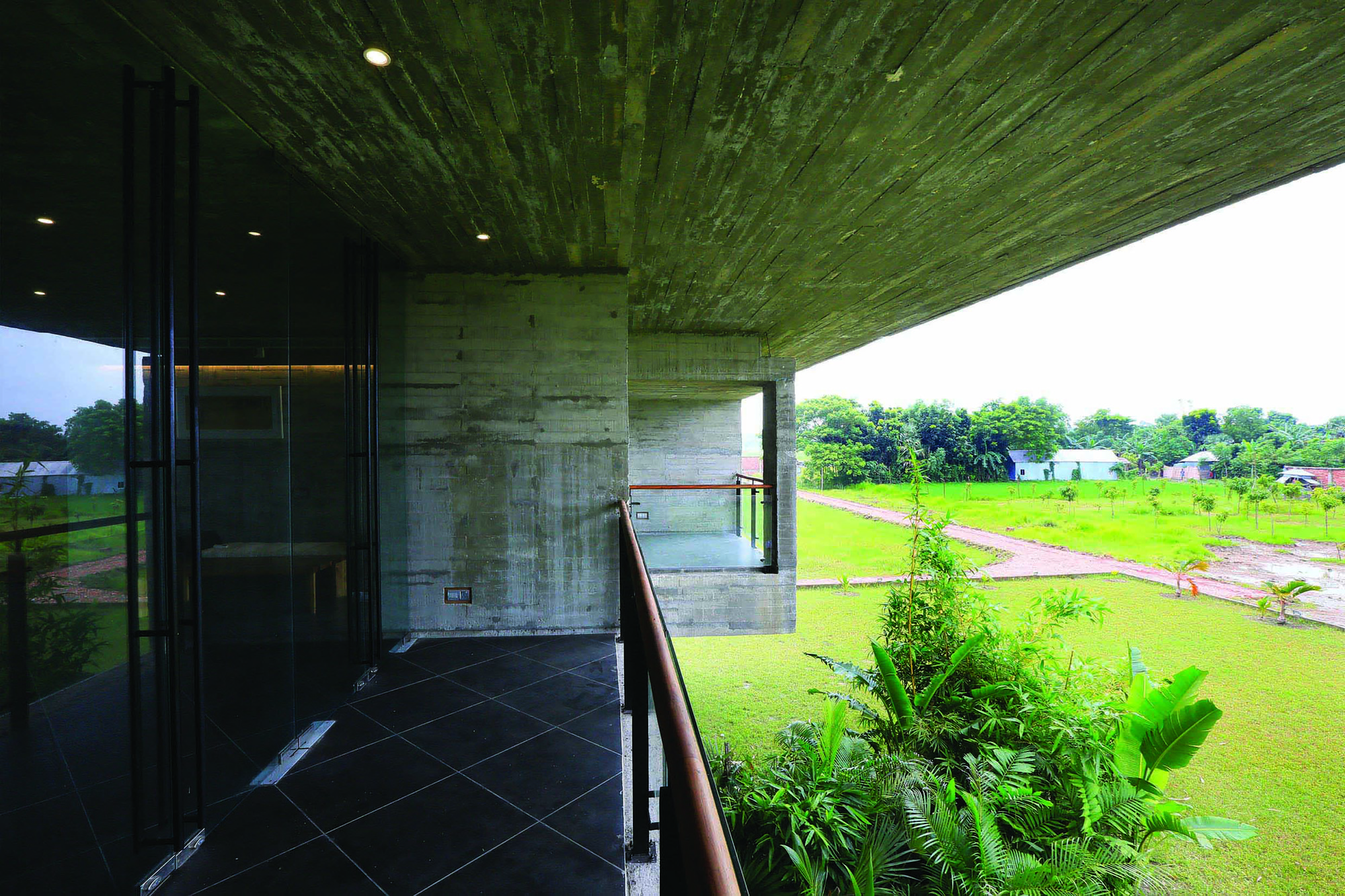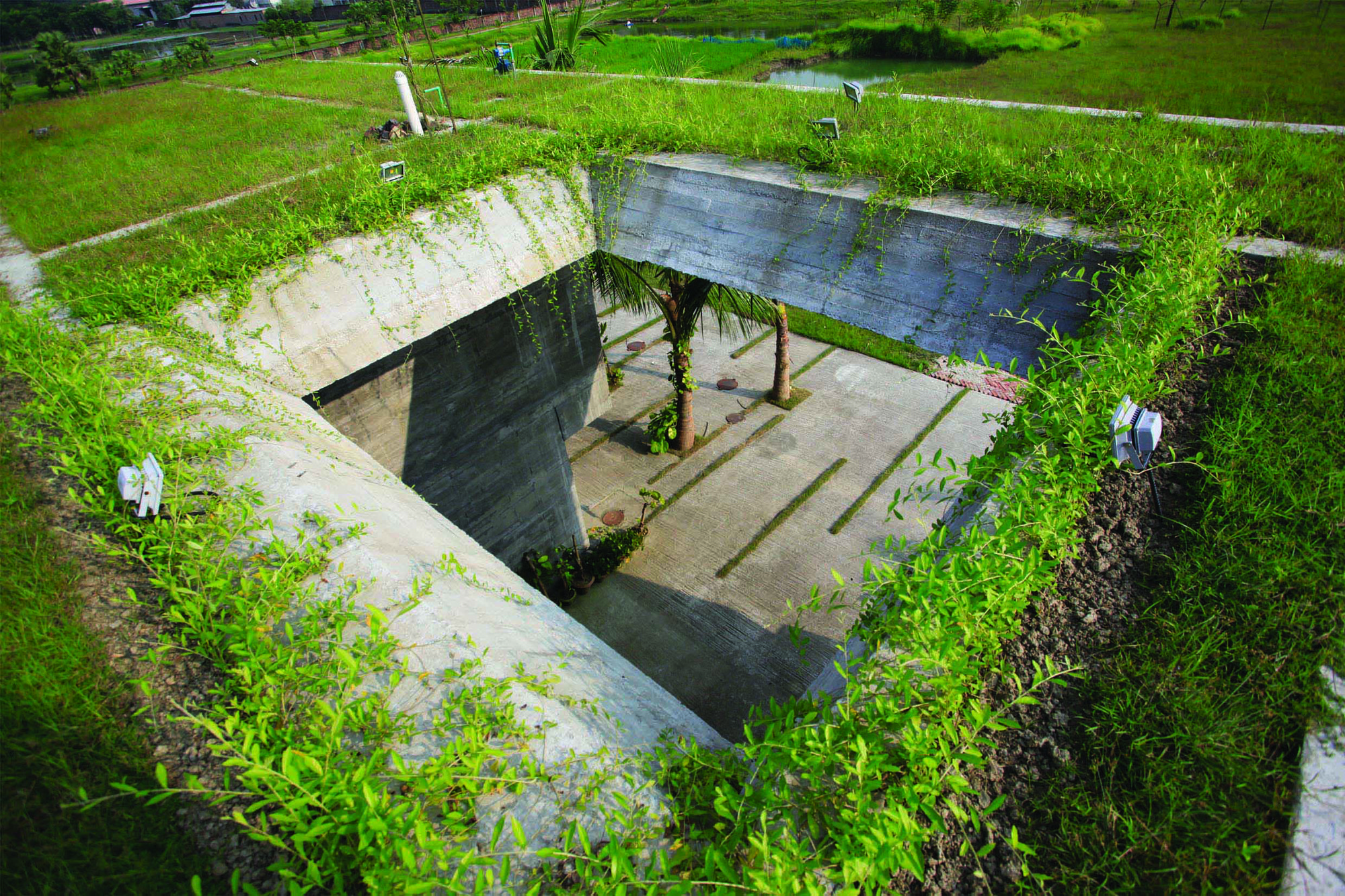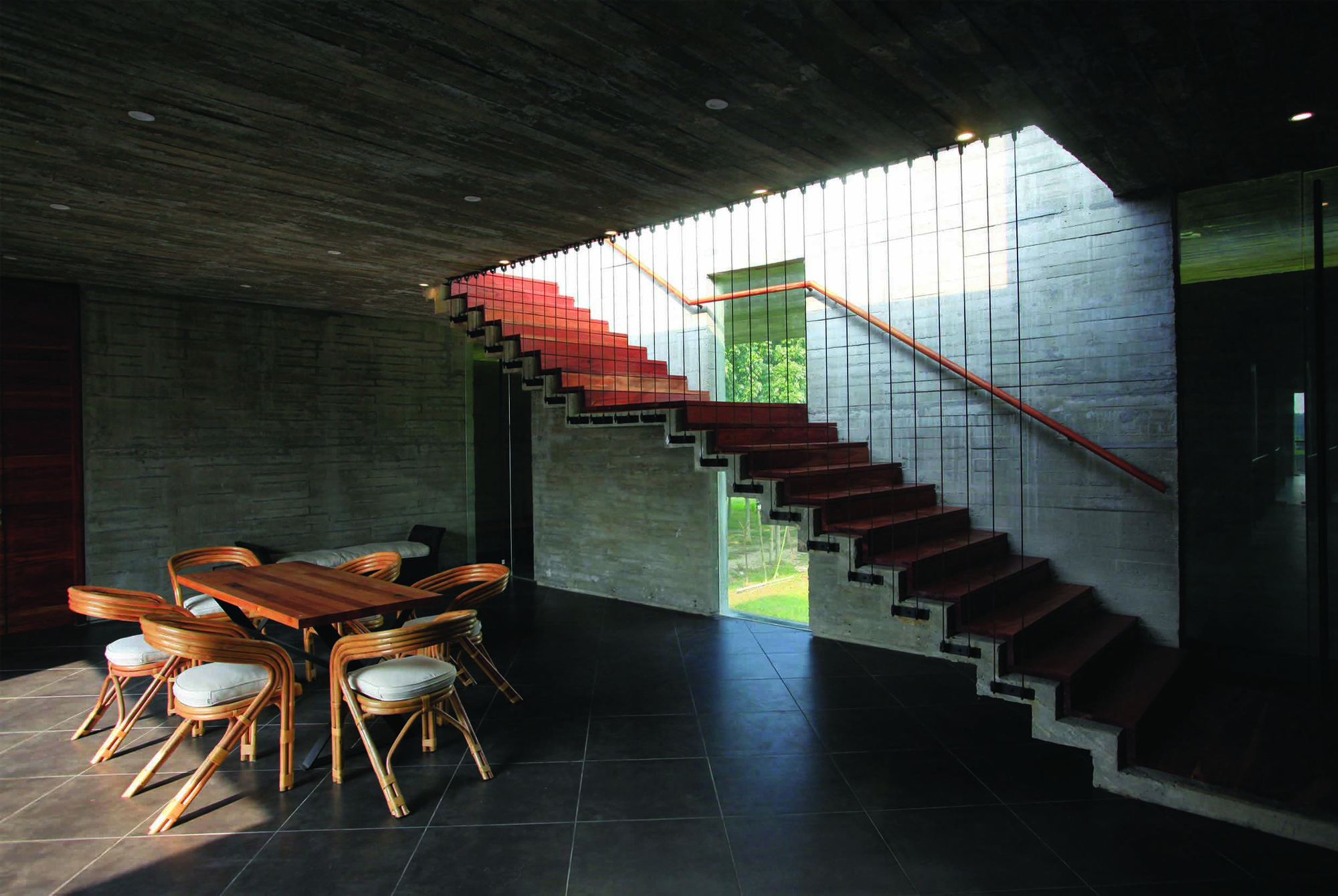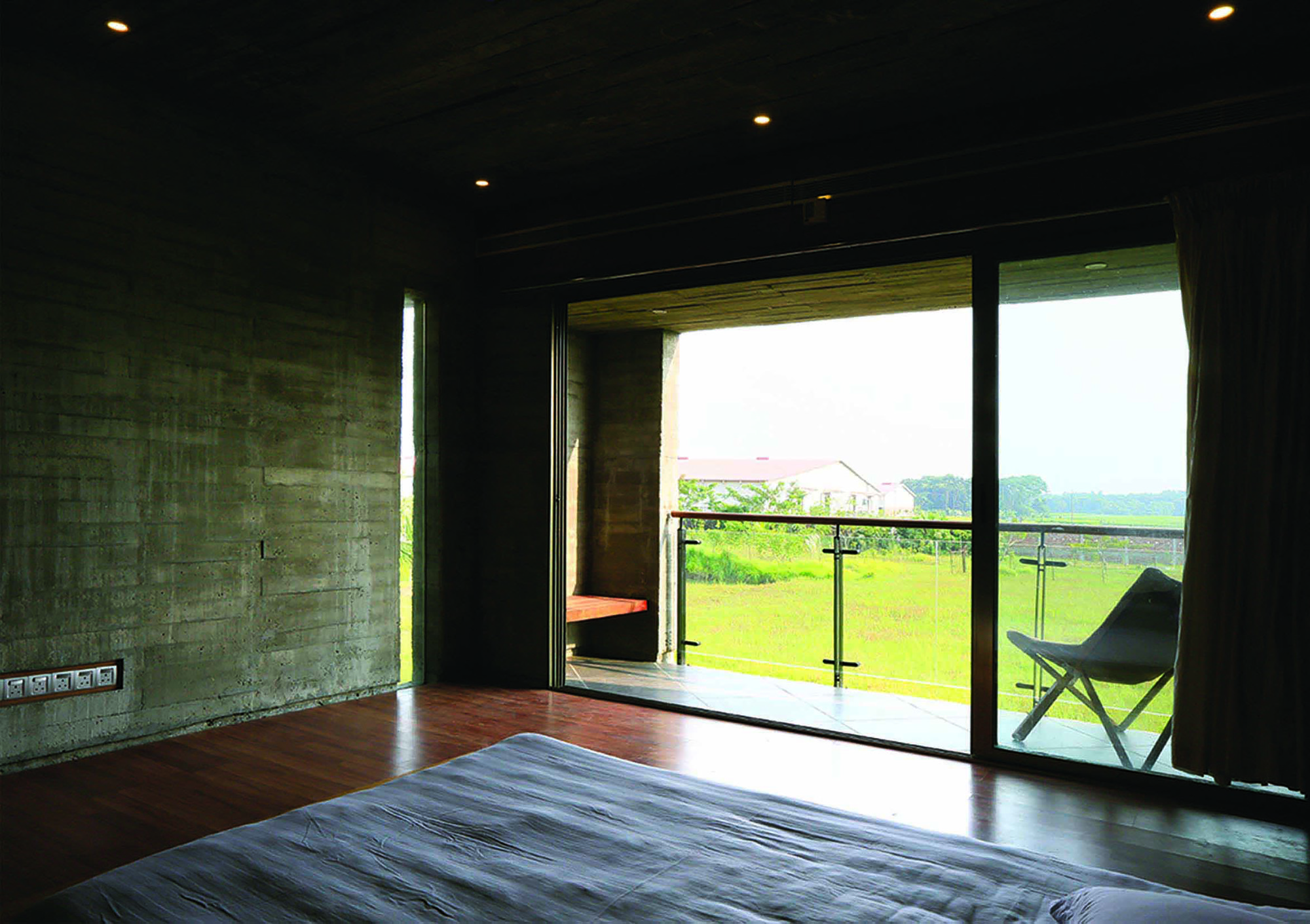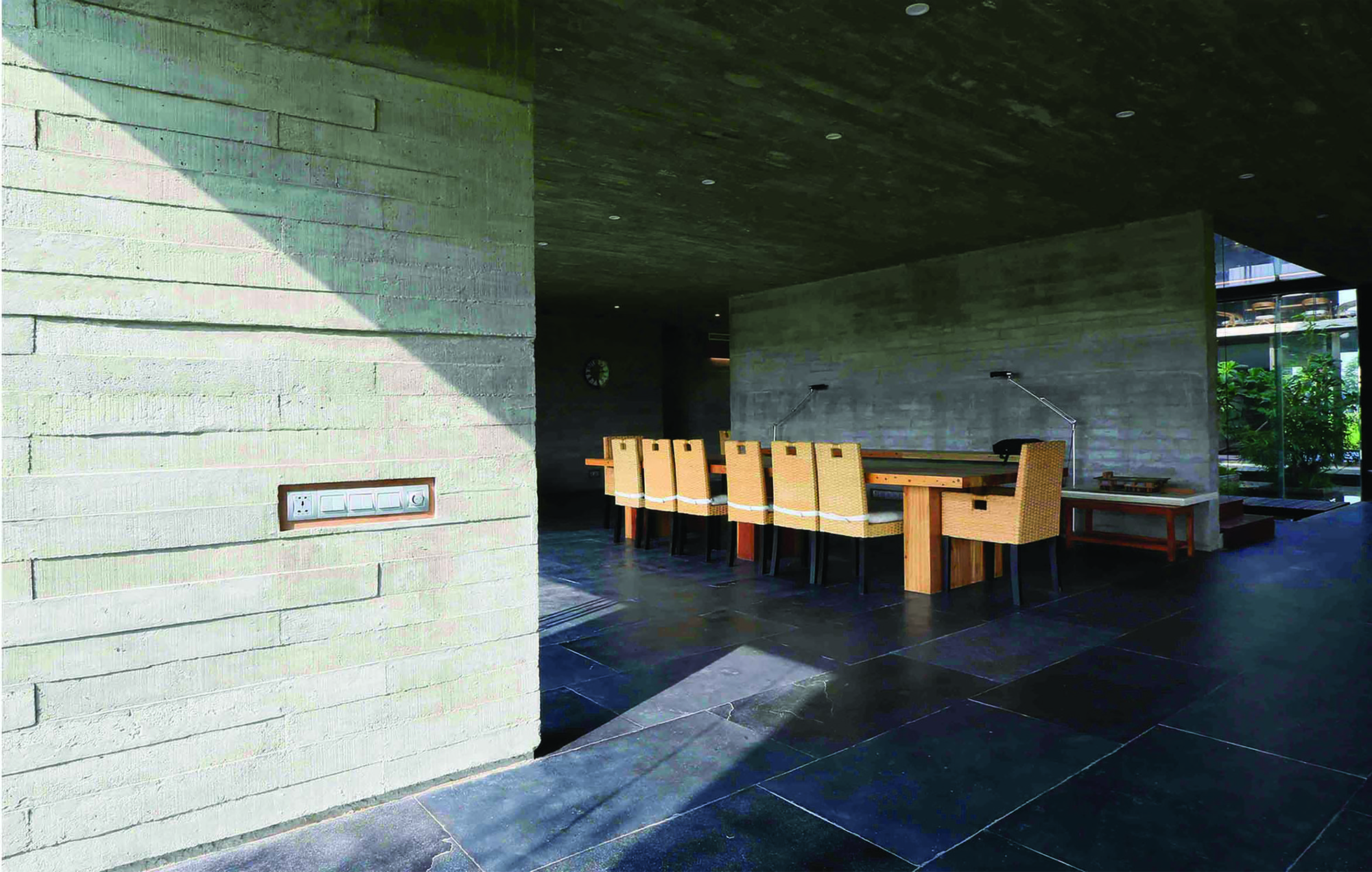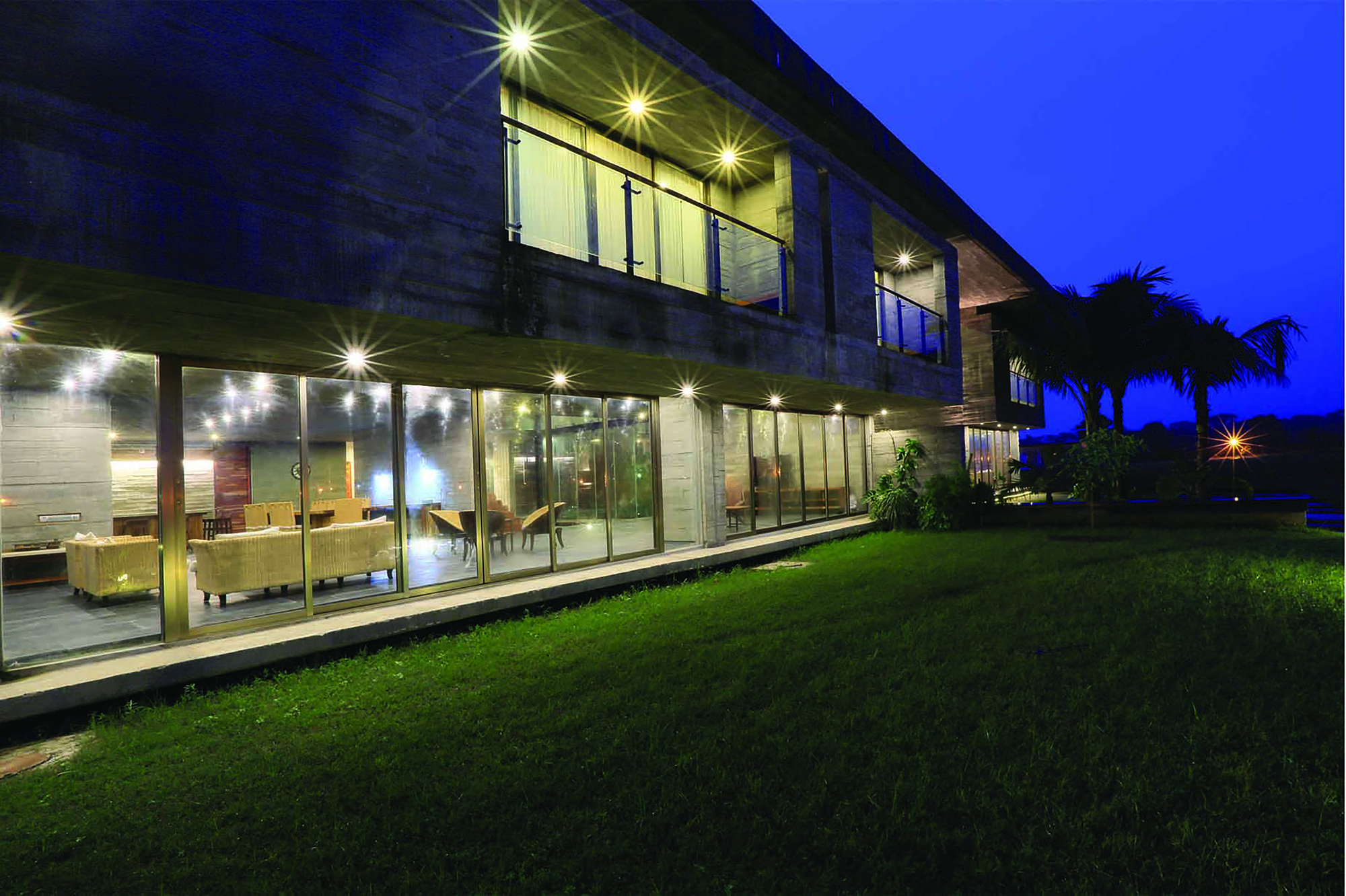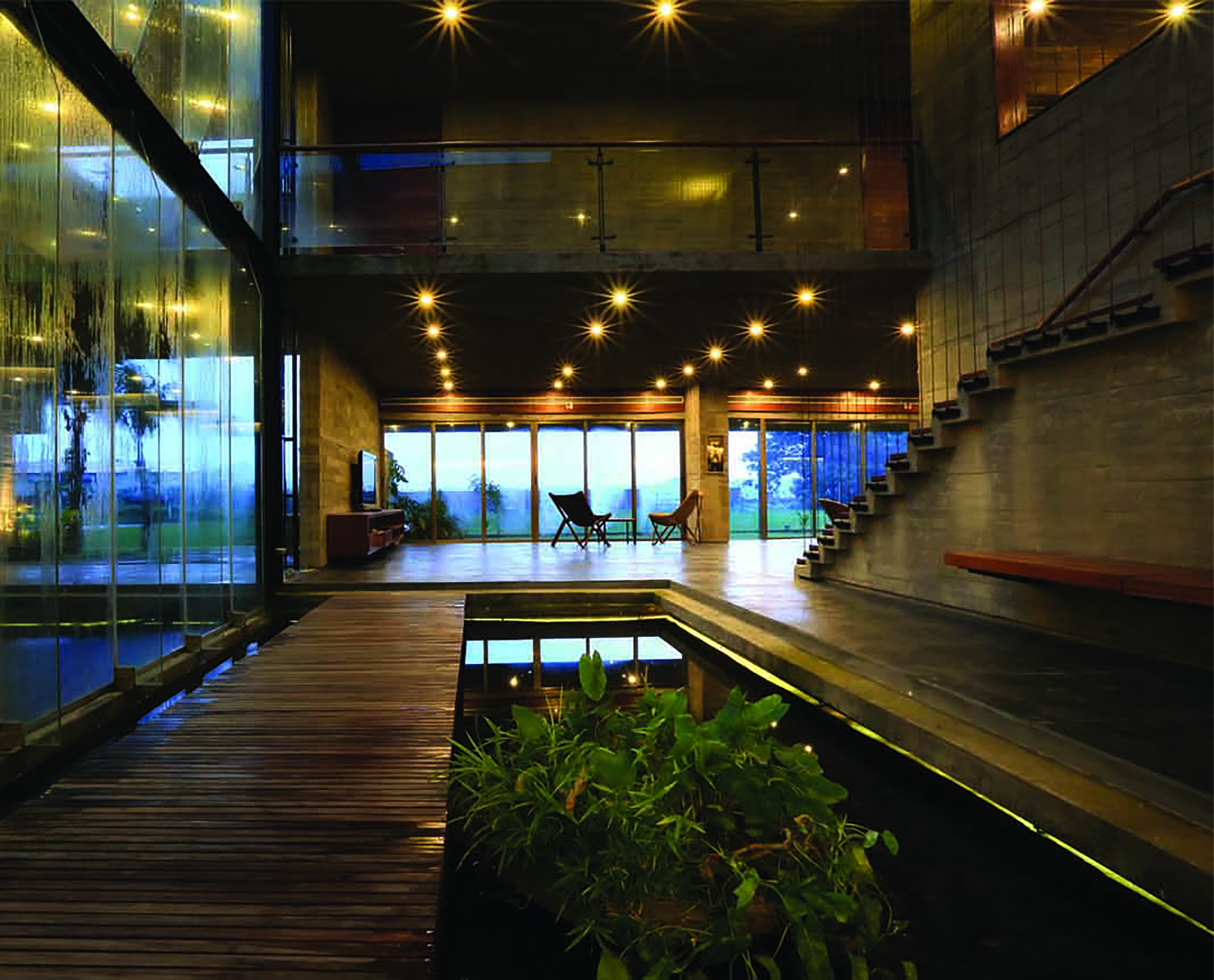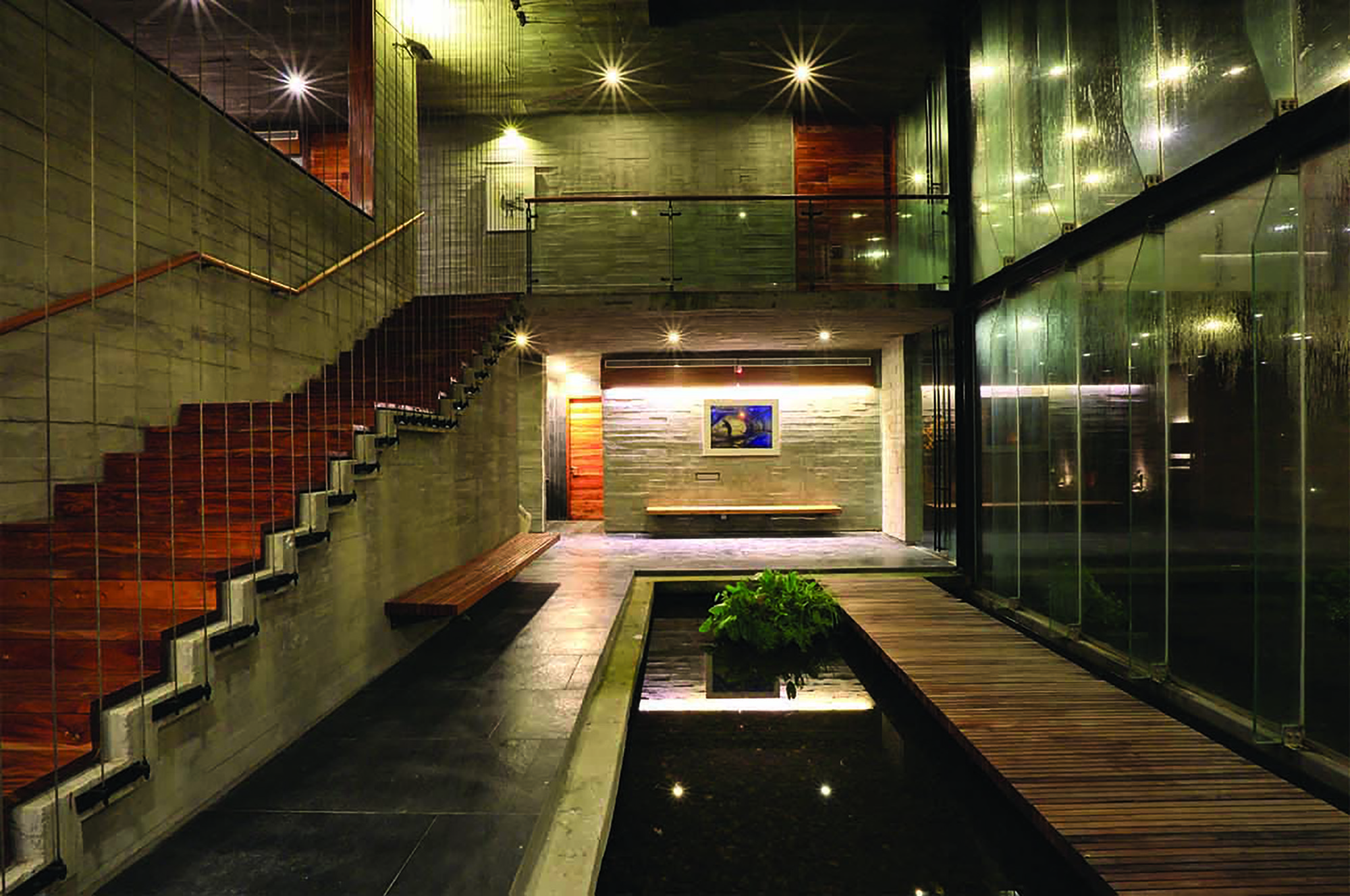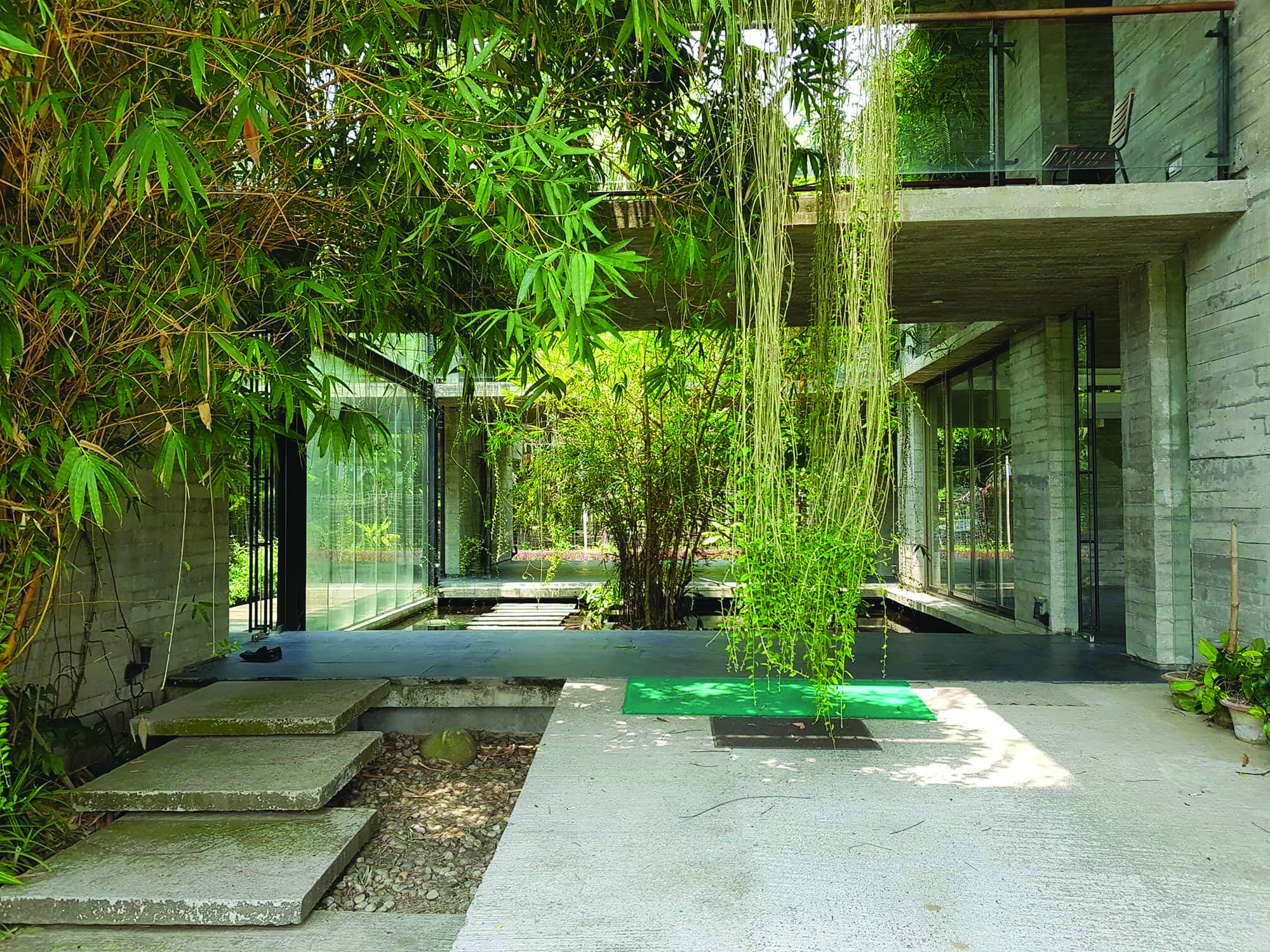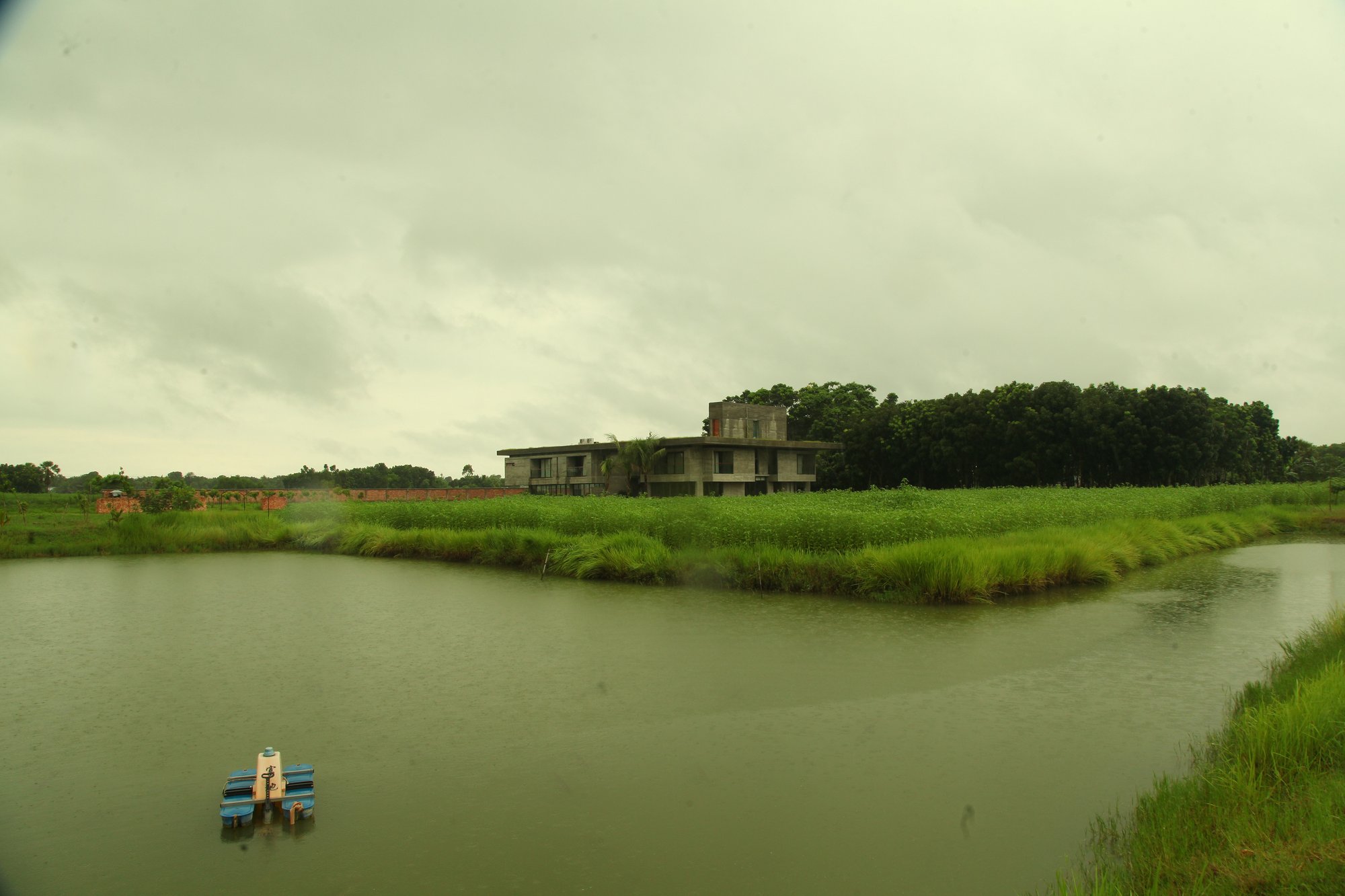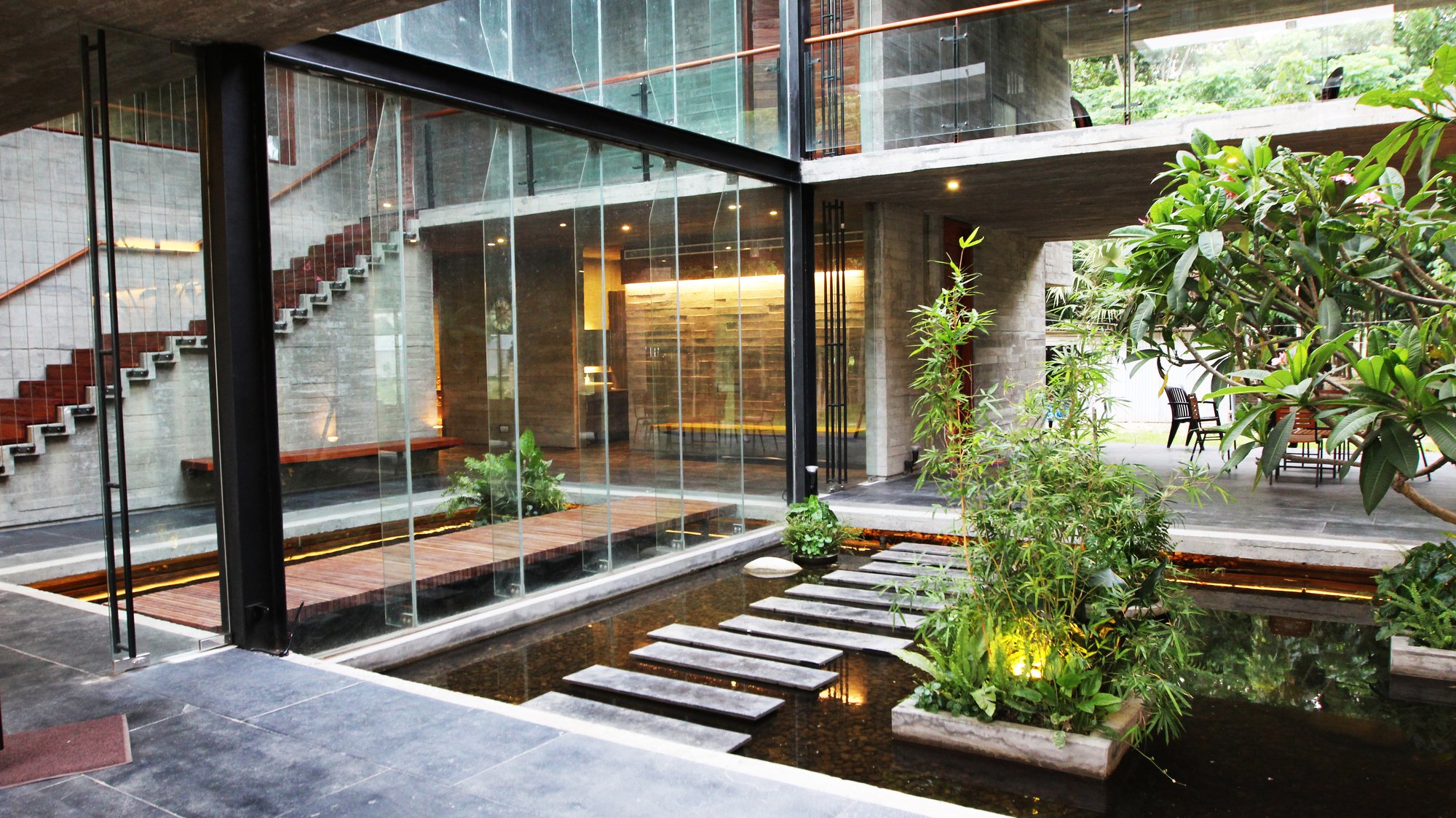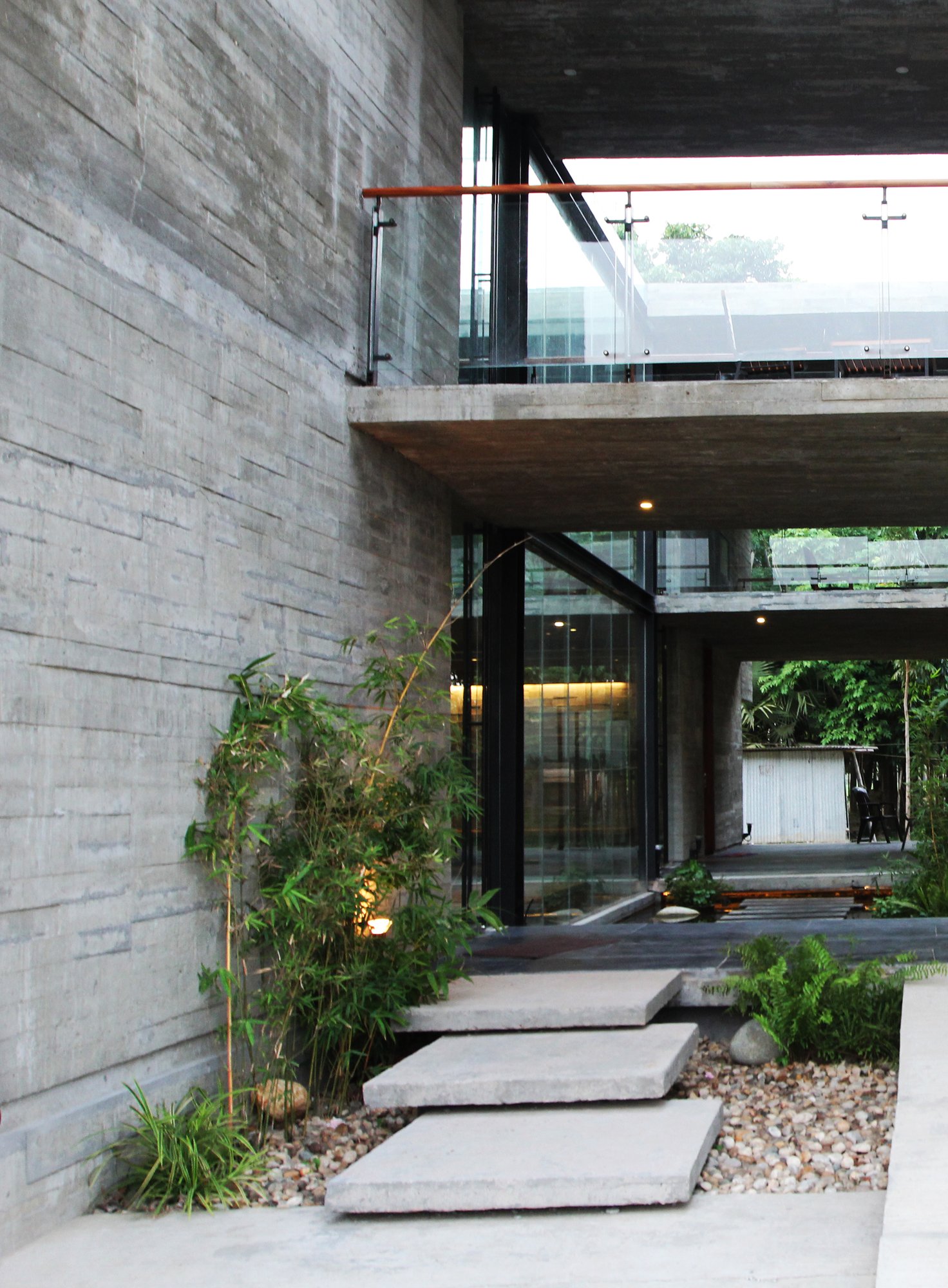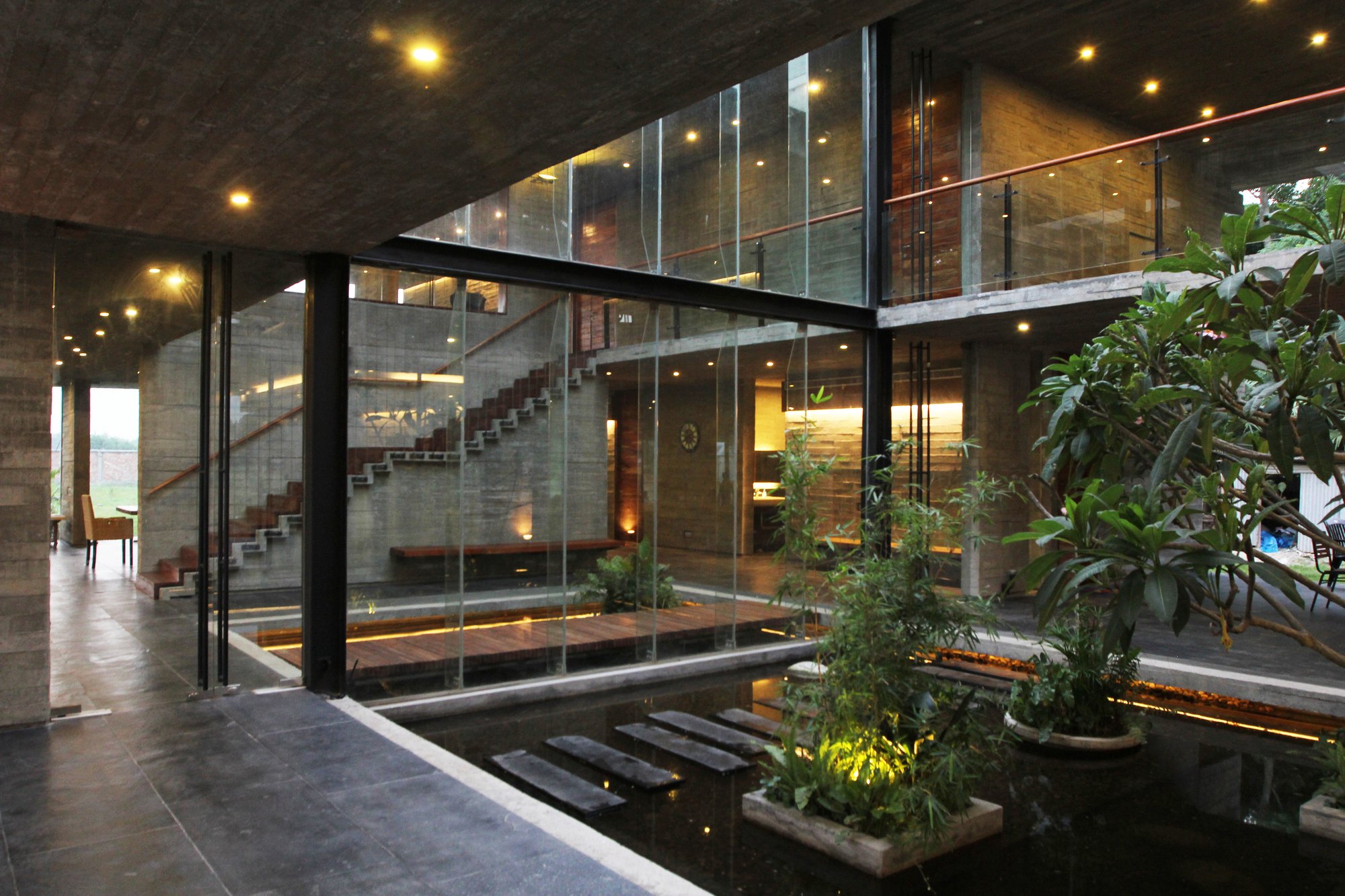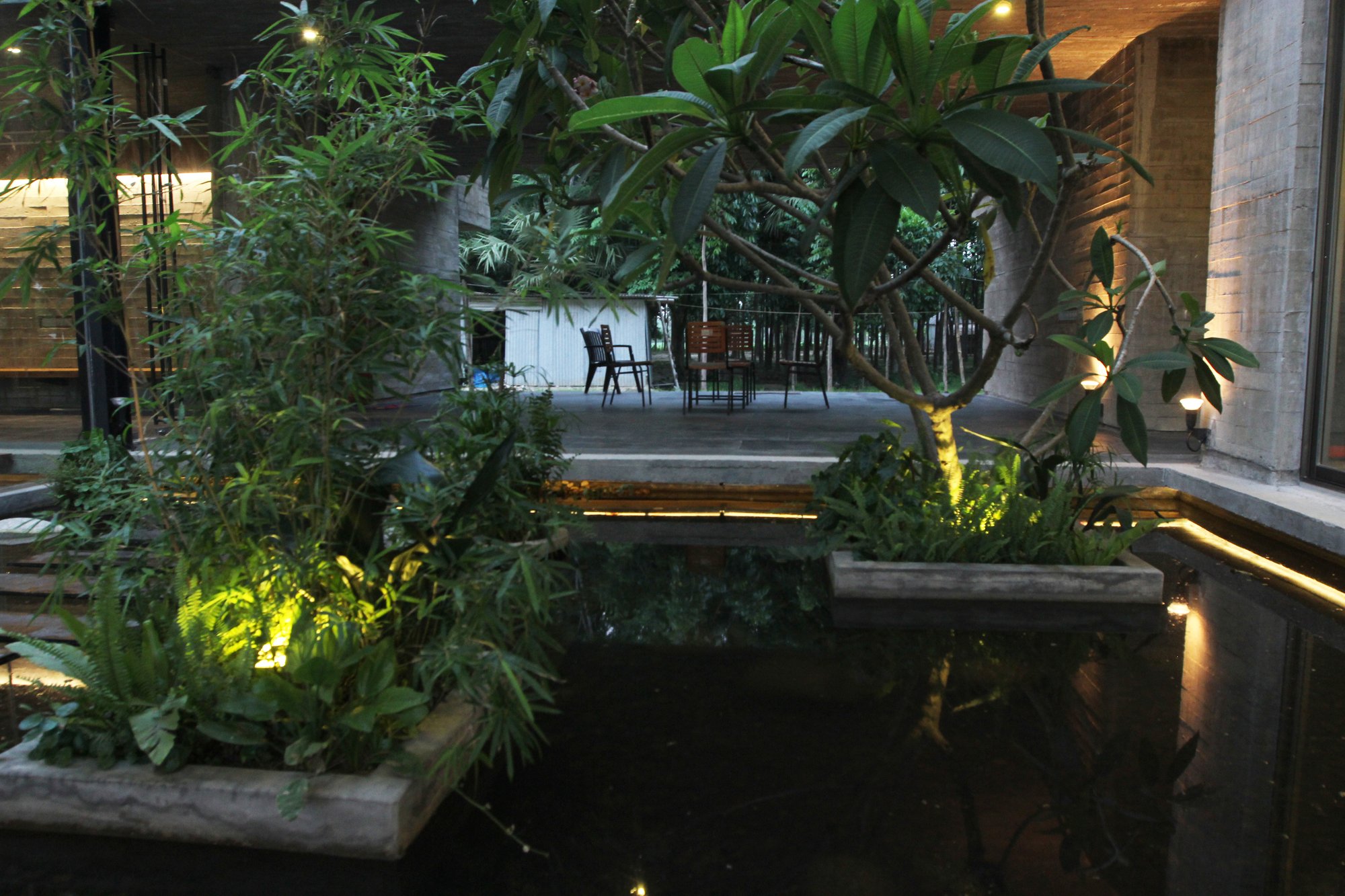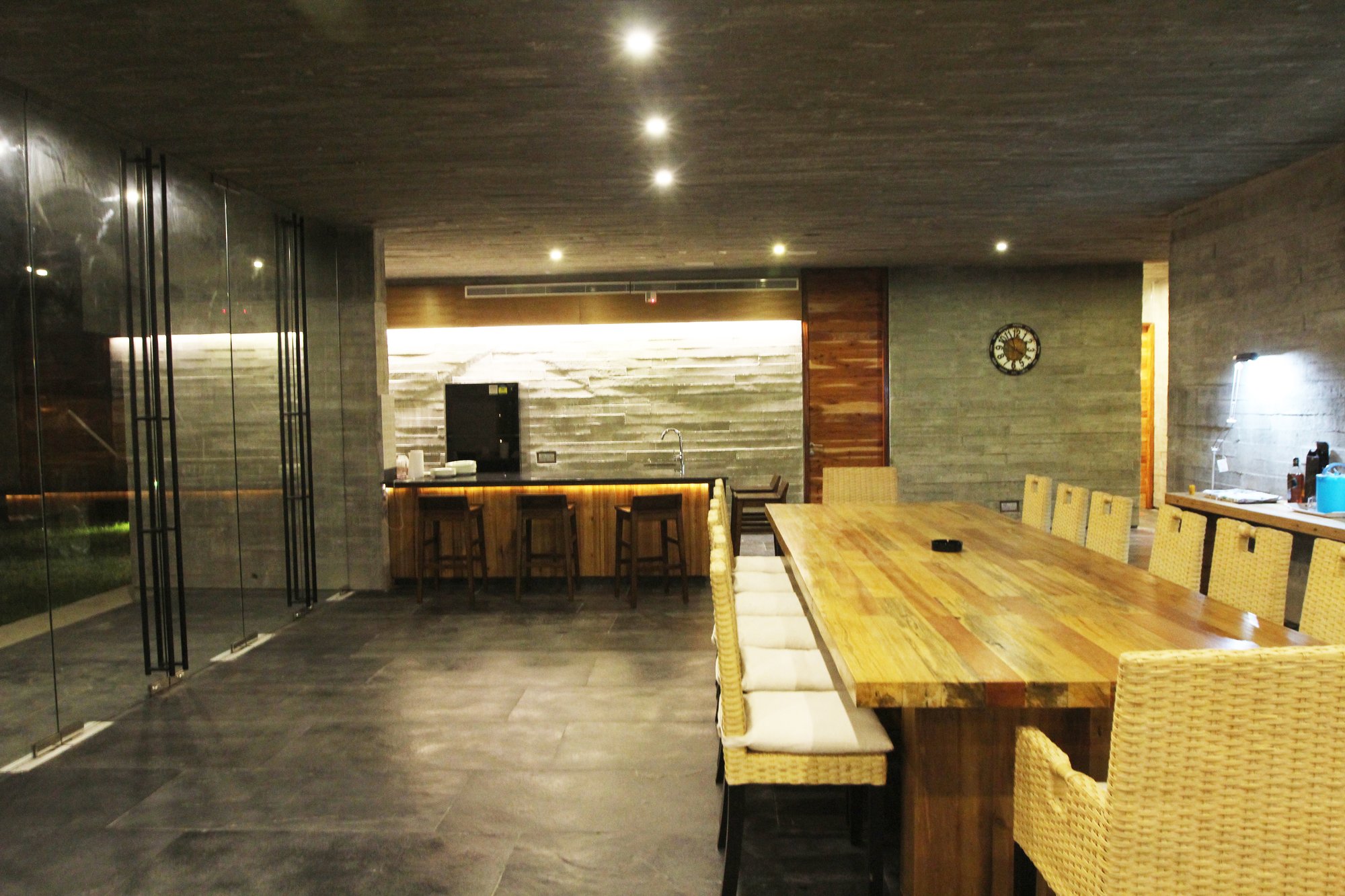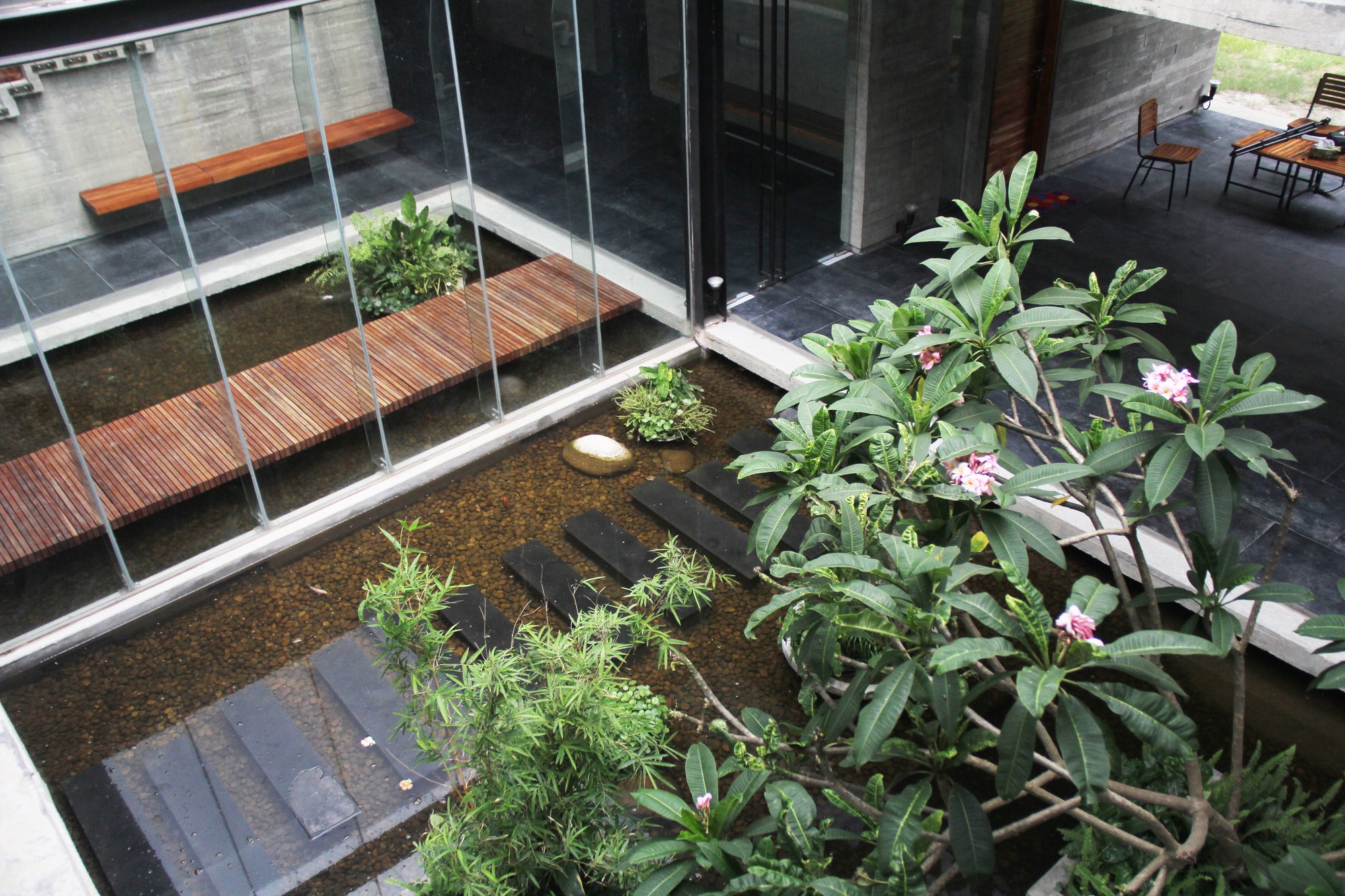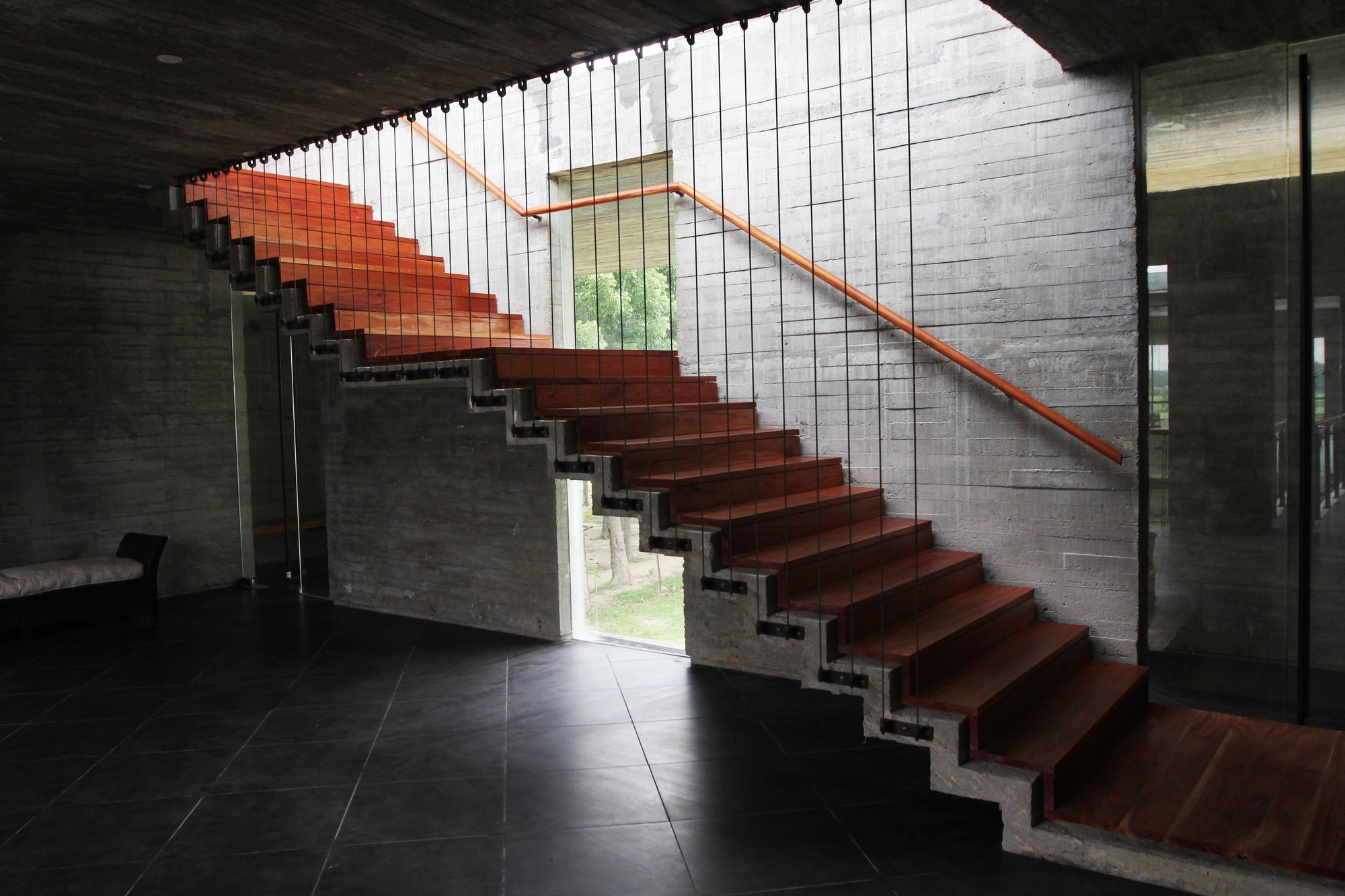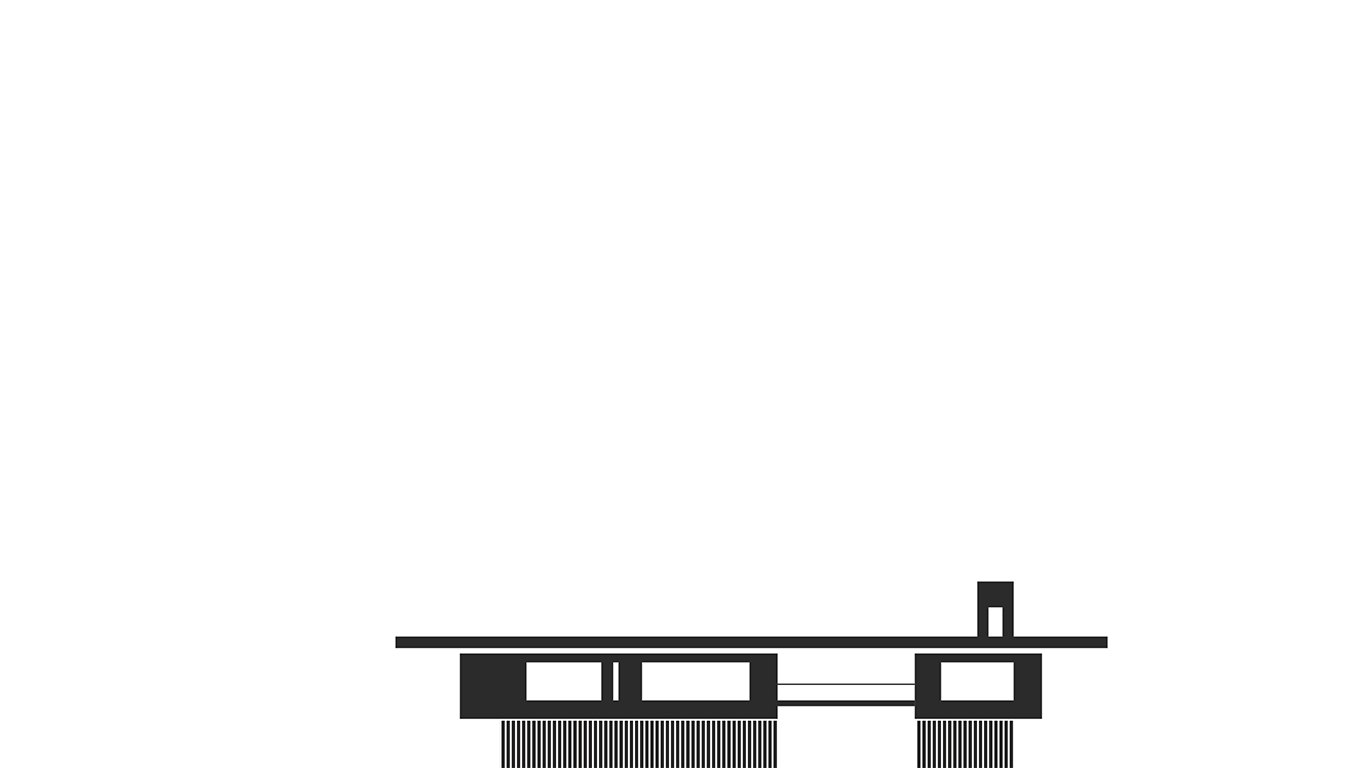
A COUNTRY HOUSE
A HOLIDAY DESTINATION FOR AN EXTENDED FAMILY
This Very Project Intended To Be The Place To House The Family In Greater Sense, Amidst The Vast Landscape Of The Jute Mill (Client-Owned) Premise. Three Generations Of An Extended Family Were To Be Housed Here, To Be Together And To Make This Building A Home Truly.
Site Location : Faridpur, Bangladesh
Land Area : 38,500 Sqm
Build Area : 2575 Sqm
Client : Mr. Rubel Aziz
Construction Year : 2012 - 2014
Structure Consultant : MAK Consultants
MEP Consultant : MAK Consultants
Interior : FORM.3 Architects
Photography : Mahfuzul Hasan Rana, Imran Hasan, FORM.3 Architects
The cosmopolitan lifestyle has given us a lot and also, has taken away more. The families are there, but not in the true sense. People are connected to one another via phone, e-mail, social media, parties, business and institutions. The bond people used to share through their house is almost extinct. There are no strings attached. There is no way we can deny our lifestyle. But yet, we can also not deny the urge of the place to create memory – the place to be with family. The intention was to REINSTATE THE LOST INHERITANCE and also, to meet the philosophical and psychological need of the urban people.
This very project intended to be the place to house the family in greater sense, amidst the vast landscape of the Jute Mill (client-owned) premise. THREE GENERATIONS OF AN EXTENDED FAMILY were to be housed here, to be together and to make this building a home truly. The 5 brothers, one of whom is the client, would come here with their families and the parents, and friends sometimes. It was a challenge to make it a place TO CREATE MEMORIES for all these people who would come here to get rid of urban life’s hustle and bustle in a very remote and serene setting.
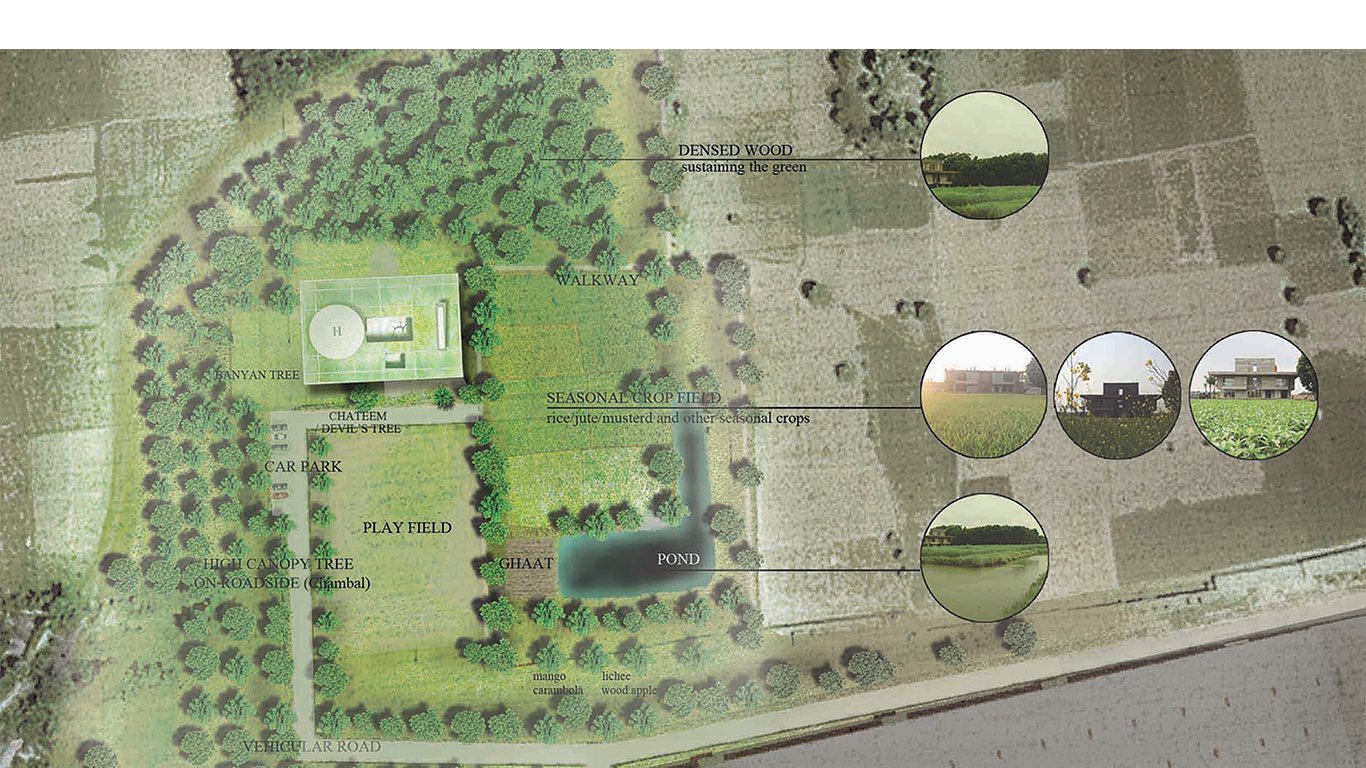

The context falls within the tropic. Key features are BURNING EQUATORIAL SUN and BEATING RAIN. But the tropic covers around 40 percent of the total surface area of the Earth and thus covers around 40 percent, if not more, of the total architecture all over the world. But the characteristics of these buildings vary, as the MICRO-CLIMATE ranges in a huge variety. In this particular case, the context lies in a WARM-HUMID zone. The function of the building here is to modify the ENVIRONMENT. We expect the buildings to keep us dry when it rains, keep warm when cold and to cool us when hot.
Here the architecture will play ALL THE SENSES _ the smell of earth after rain, the sound of birds and the wind in the trees, the texture of the earth and concrete, the transparency of the glass, even the taste of the monsoon rain. The color of the brown (wood) is also present here and there in subtle amount. The grey, the brown and the black all the neutral colors of construction matches and also complements the color of greenery and the color of seasons.
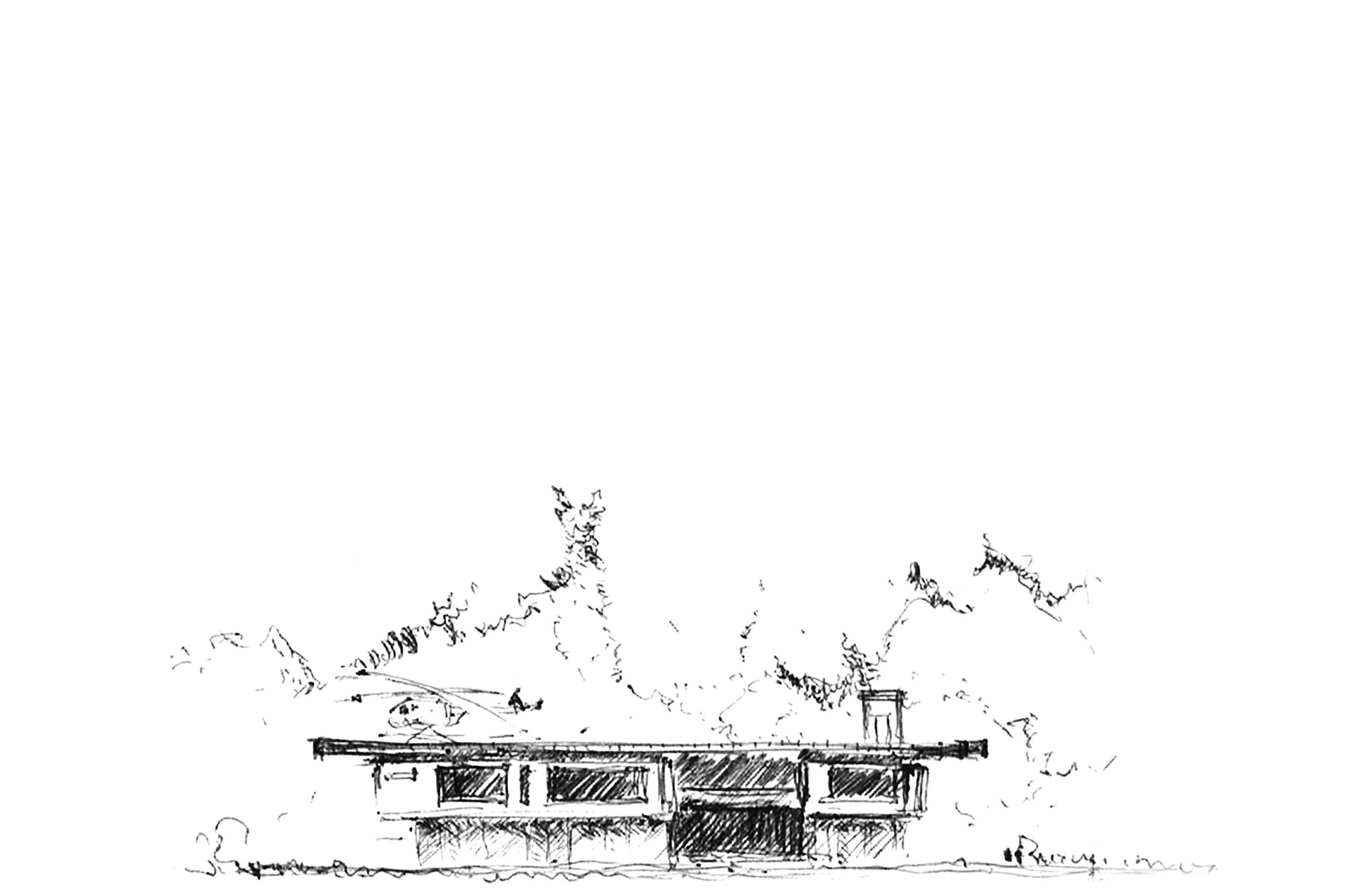
LIGHT is the most vital element used in here that acts as a building material to reveal all the other materials in their true nature. The building is totally RESPONSIVE TOWARDS THE SEASONS of Bangladesh. As the season changes the tropical garden changes the mood and its color and the garden pavilion house shines within it. Even the selection of the herbs, shrubs and trees i.e. overall vegetation, are guided to act as per nature’s change. Thus, GREEN has also been used as an important building material to accentuate the nature and living condition.
Each space is provided with cross ventilation and ample natural light. Even the roof is designed as a garden that again merges with the surrounding greenery. It’s like living in AGARDEN WITHIN A LARGE GARDEN. The wide projected garden roof is one of the most important single elements in the monsoon climate, giving protection from the burning sun and torrential rain.
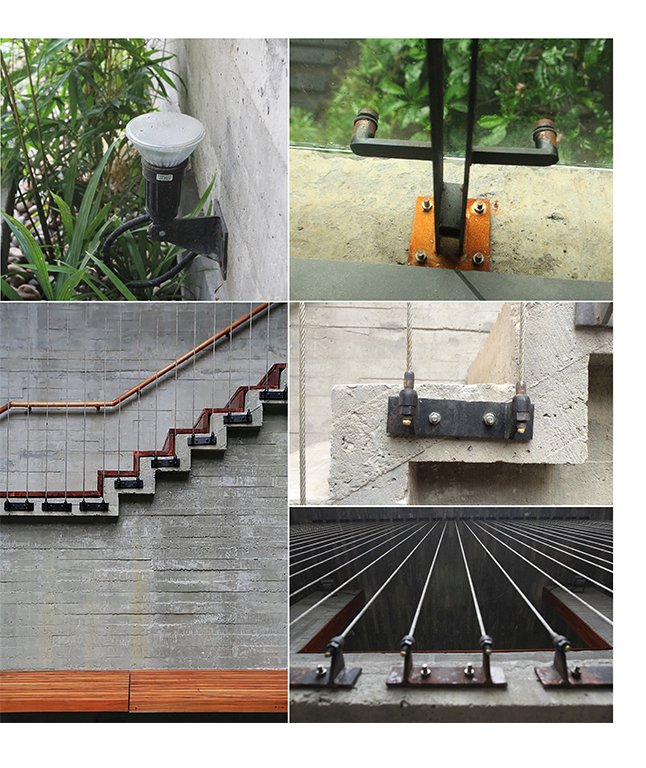
LOCAL BUILDING TECHNIQUES are the key to the construction of this building. Also, only LOCAL MASONS were appointed to complete the job. They had been trained by the architects and engineers to support the whole construction. KNOWLEDGE SHARING with the masons helped to take proper decision and adopt the appropriate construction techniques. Some decisions were made through several TRIALS AND ERRORS like string/cable railing of the stair, offset cut switch boxes in concrete walls etc.
The stair, the light holders, the string railing, the doors, the hand-rails of the doors and even the wall-inset switch boards are custom-made. All of the items are CUSTOM-DESIGNED and sometimes they individually took several trial and error phases to reach desired termination. Here, the opportunity to experiment was availed and more like a PRODUCT-DESIGNER ATTITUDE had been adopted.
The main constraint was to find SKILLED LABOUR and CHOSEN MATERIAL in the locality. But, to attain sustainability, indigenous material and labour were used with utmost care. Local building techniques are the key to the construction of this building. Also local masons were appointed to complete the job. They had been trained by the architects and engineers to support the whole construction. KNOWLEDGE SHARING with the masons helped to take proper decision and adopt the appropriate construction techniques. Some decisions were made through several trials and errors like string/cable railing of the stair, offset cut switch boxes in concrete walls etc.

ROUGH WOODEN TEXTURED CONCRETE is selected as the primary material for its expected positive ageing characteristic. It blends with the earth as well as complements with the green surroundings. The sun plays over the rough texture whole day and creates lively exterior and interior spaces. Low maintenance is also a factor for choosing the material. Singularity is expected to be achieved by the use of concrete as floor, as walls and finally roof.
Locally available MAHOGONY wood has been used for the whole project. It has been selected for its availability and striking natural warm color as a complementary insertion in the grey concrete ambience. Also, factory-used packing wood has been used to minimize the wastage.
The PARASOL ROOF acts as an insulator for the whole building. The masters who practiced in our country like STANLEY TIGERMAN, CONSTANTINOS DOXIADIS, ROBERT BUI, MUZHARUL ISLAM found the parasol roof to be the most suitable archetype for warm-humid climate. The cooling effect of parasol enhanced by deep and extensive roof gardening. The grass, creepers and any form of vegetation in the lawn and also in the roof level were chosen and taken from the surrounding ground. Therefore, when you look behind the horizon, you see only thin lines of built structure swimming through the GREEN. The ground has been merged and lifted in such a way that it feels like a camouflage.
The building has been built with prominently one single material in a word. To create an ACHROMATIC MARK in the abundant green was the intention. Therefore, only grey wood-shuttered concrete has been used as primary material in building the house to match the color of earth, the texture of surroundings and to celebrate sunlight & colors of seasons and nature.
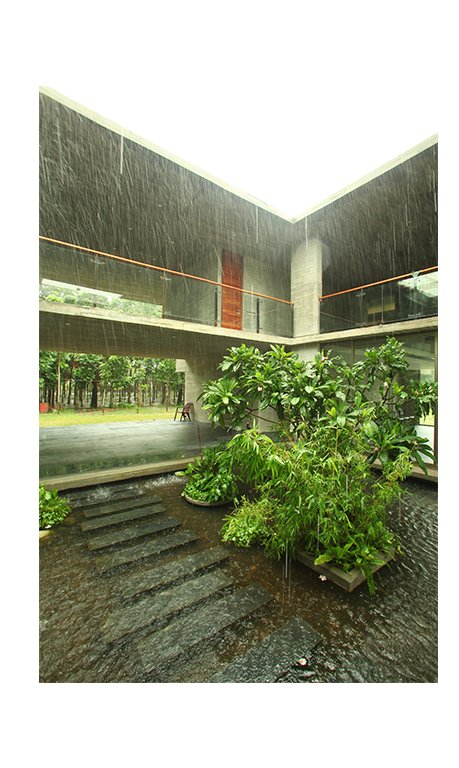
The entrance is such that it cannot be defined as a conventional entrance. A door or a gateway can be an entrance to welcome people. And, when there is no door or gateway, there is a void in the house that connects outdoor to the indoor and welcomes you to the home away from home. You won’t even know when you are inside, the outdoor leaks into the indoor in such a way through the ENTRANCE VOID.
The entrance void leads towards the CENTRAL COURTYARD that contains a reflection pool with pebbles, local water-plants, sunken steps and fish. Heading straight, the eyesight goes beyond the building premise into the DENSE WOODS behind, uninterrupted. Also, beside the central courtyard, the reflection pool flows into the interior to create the PLACE OF CONTEMPLATION. You can sit here for hours and you won’t know the time passing by. Even if it is an enclosed and controlled environment, you shall always feel the outdoor and the nature in here.
In the center there is a courtyard which is accessible from both the main approach and the back garden. It is an AMBIGUOUS PLACE where all the major spaces and levels of the home meet and where light penetrates from different angles all the day and even during the full moon which enliven the major interior spaces. The water container containing greeneries, stones, water, fishes symbolizes the PRESENCE OF LIFE in the whole house. The CHANGING MOOD of the interior spaces was imagined as one of the prior concern of the house.

The house took time. It took time to be designed and to be constructed and to accommodate the users and their spaces and their time. It took time to be a piece of art, to be a symbol of fine indigenous craftsmanship in course of using the materials and the force of landscapes. And, it is still taking time. It is taking time to grow, and someday it will grow to be the PLACE TO CREATE MEMORIES.
Nowadays cities occupy the Centre ground and radiate their grid-like surrounding and their speed, the country means a move towards another type of achieving environment. A desire for isolation from the hassle of everyday life is there to start a dual journey. Proximity is desired to more simple and fundamental things and gradual detachments from urban networks of relationships and obligations.
A home, can it be built without emotions? Can it be built without memories? Can it be woven? And can it be built without nature?
As we mentioned before, the intention was to REINSTATE THE LOST INHERITANCE and also, to meet the philosophical and psychological need of the urban people.
